These buildings seem otherworldly, though they were created by mere mortals
08 Nov 2024There are many impressive unusual architectural solutions in the world. We have selected a selection of extraordinary, funny, and strange buildings that will evoke a variety of emotions. Hurry up and scroll through our article, and enjoy these oddities.
Beer Can House
John Milkovisch worked for the Southern Pacific Railroad. After he retired, he spent 18 years making his house look pretty. He used about 39,000 beer cans to decorate his home in Houston, Texas. Every day, Milkovisch drank six beers. He used the empty cans to make his house look special.
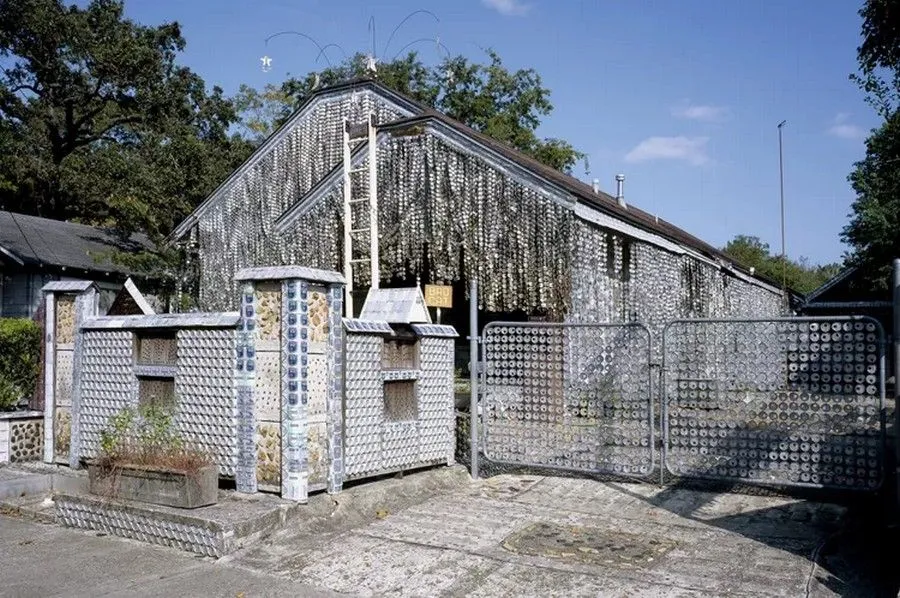
@Carol M. Highsmith/Buyenlarge.com
He flattened the cans and used them to cover his house. He also made decorations with the pull-tabs from the cans. Milkovisch died in 1988. A group called the Orange Show Center for Visionary Art owns his house. They have fixed it up and keep it as a special place.
Old Water Mill
In the city of Vernon, not far from Paris, there is an architectural masterpiece - an old water mill. It has been standing there for at least a century and is still supported by two pillars of the old bridge. The only thing known about this bridge is that it was built during the reign of King Philip II.
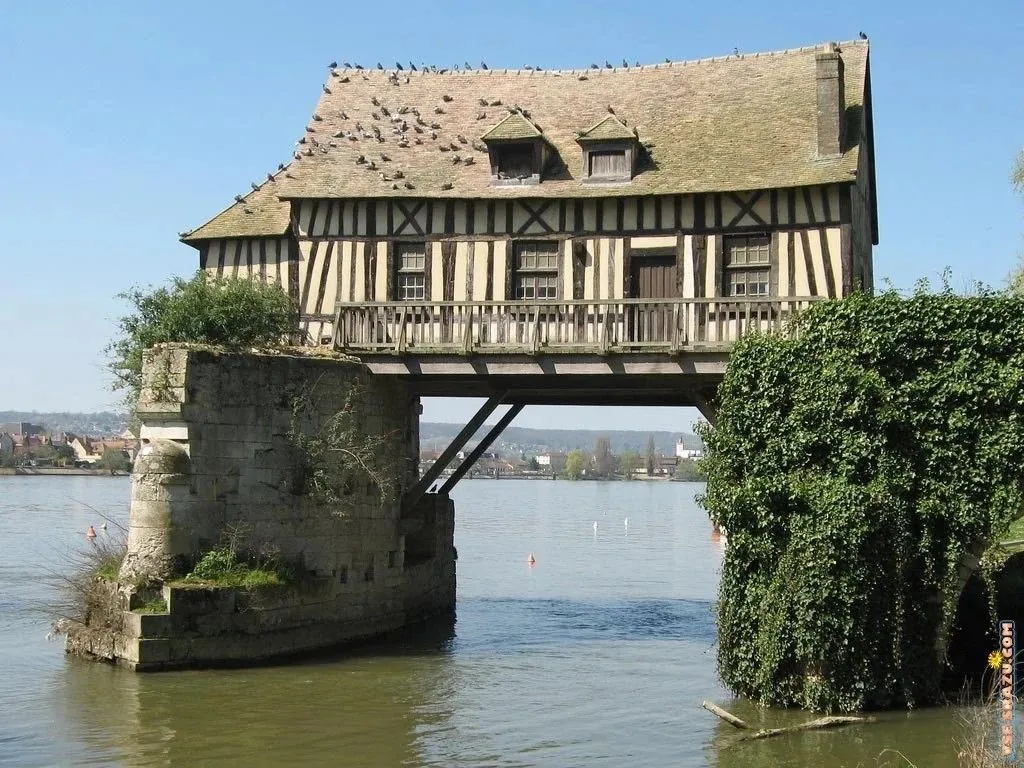
@lopix/reddit.com
At that time, the bridge was of strategic importance - it confronted the enemy, who at that time was Richard the Lionheart. To raise money for the construction of such an important bridge, the king decided to sell the right to build a mill and to fish near the river, next to the bridge. Years passed, and there were major wars and even bombings but the bridge and the mill remained intact.
Strange House in the Alps
This quirky stone house in the French Alps is famous for its unusual shape, which many say resembles a hospital bedpan. Regularly featured on the Top 10 lists of strange buildings, it captures the attention of visitors who stop to admire and photograph its peculiar design.
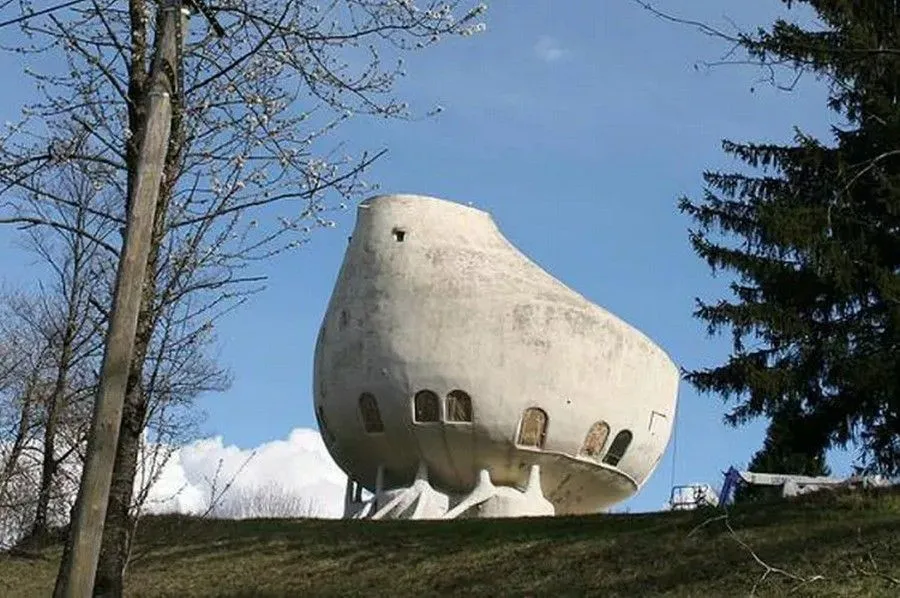
@Nicolas Nova/Flickr.com
The house sits in peaceful isolation, framed by the stunning mountain landscape, adding to its mystique. Despite its fame, the identity of its residents remains a mystery, leaving tourists to wonder who lives behind its thick stone walls.
The Minister's Tree House
Horace Burgess from Tennessee had a big dream—to build the largest treehouse in the world. Starting in 1993, he worked on it for nearly twelve years, building without any blueprints and believing he had help from above. His treehouse stretched across six trees and reached high into the sky.
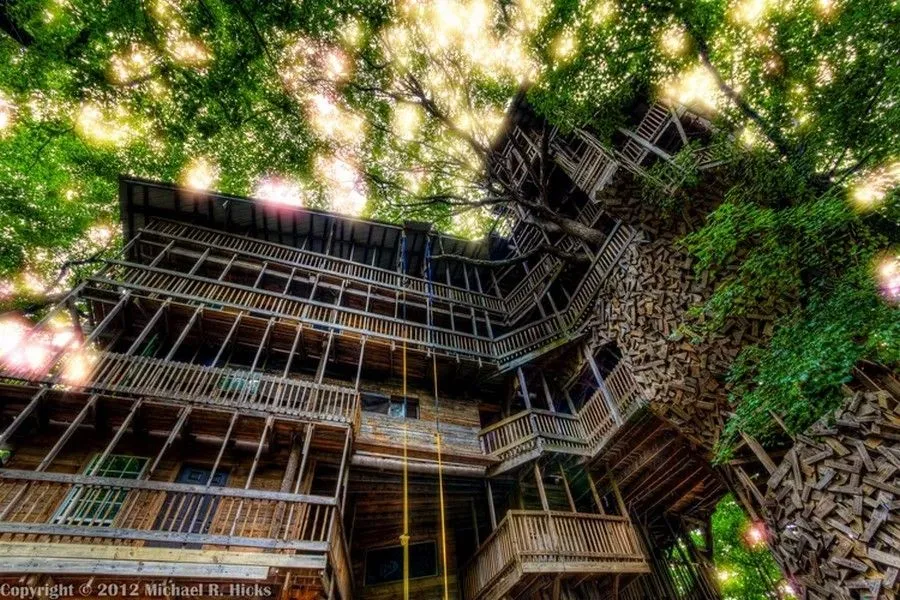
@J.L. Ramsaur Photography/Flickr.com
Over time, it became a popular attraction, drawing tourists from all around. However, it eventually had to close due to building and fire code violations. Despite this, Burgess’s towering treehouse remains a legendary feat of determination and imagination.
The Mushroom House
James H. Johnson was an architect who designed unusual buildings. He was inspired by another architect named Bruce. Johnson designed a very strange house called the Mushroom House. It's located in Powder Mills Park, near Rochester, New York.
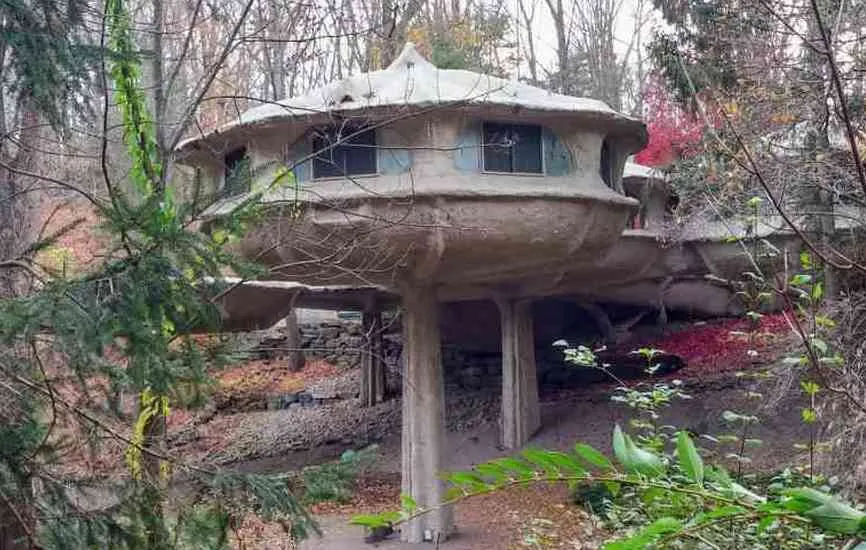
@Debi Bower/daytrippingroc.com
The house looks like a bunch of mushrooms connected by walkways. It's a very unique and interesting design. Johnson was also known for designing the Liberty Pole in Rochester. It's a tall, thin pole made of stainless steel. It's a famous landmark in Rochester and people often gather there.
Free Spirit House
Free Spirit Houses are special houses that hang from trees or cliffs. They look like big, round wooden balls. These houses are made by a man named Tom Chudleigh. Each house is unique and is hung from ropes. To get inside, you have to climb a spiral staircase or cross a bridge.
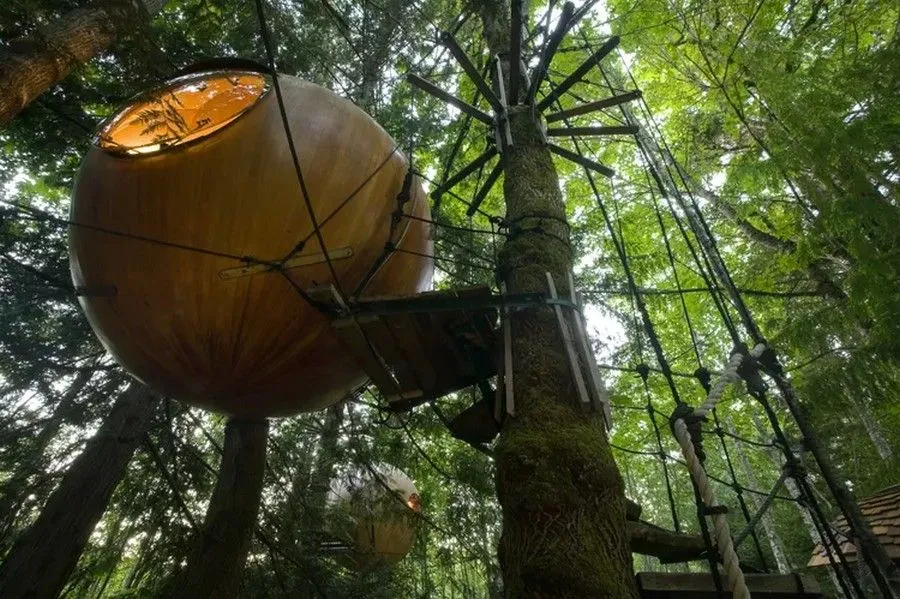
@Boomer Jerritt/allcanadaphotos.com
When you're inside, the house sways gently like a fruit on a tree. Even though they look strange, these houses are very smart. They are designed to copy nature. If you want to stay in a Free Spirit House, you can rent one. Or, you can buy your own to put on your land.
The Mysterious Shoe House
The Mysterious Shoe House is a unique structure hidden in the woods of the United Kingdom. This unusual house is shaped like a giant shoe, making it an intriguing sight for visitors. Its origins are unclear, with many local stories surrounding its purpose and history.
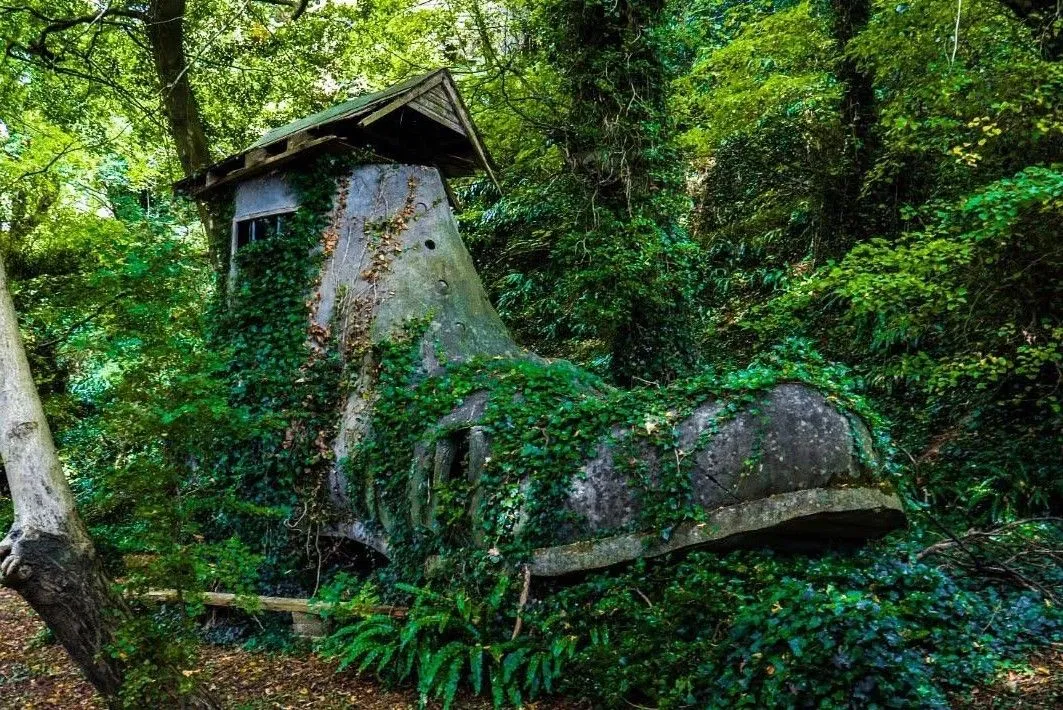
@[deleted]/reddit.com
Some say it was built as a playhouse, while others believe it served as a whimsical art project. The Shoe House’s location is secluded, adding to its mysterious appeal. Over the years, it has become a popular spot for hikers and photographers.
Lucy the Elephant from New Jersey
The six-story wooden and tin elephant near Atlantic City, New Jersey, is a National Historic Landmark known as Lucy the Elephant. Built by James V. Lafferty in 1881, Lucy’s purpose was to catch attention. She has served as an office and commercial space, drawing visitors with her unique design.
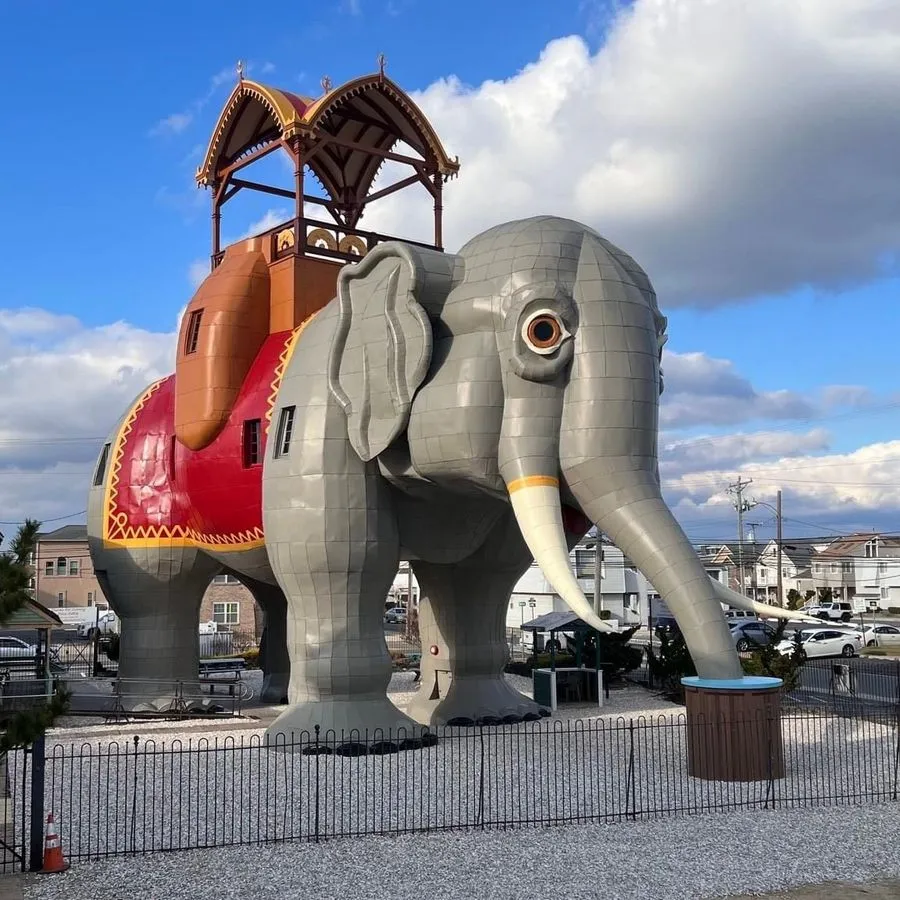
@Darren Tobia/jerseydigs.com
This type of “novelty architecture” often uses familiar shapes—like shoes or ducks—to attract interest. When buildings resemble what they sell, like donuts or apples, they’re called “mimetic” because they mimic the product. Although Lafferty was selling real estate, Lucy was his way of making a memorable landmark.
The Martian Spaceship Building
The Theme Building at LAX is very cool and futuristic. Architects Paul Williams, Pereira & Luckman, and Robert Herrick Carter all contributed to its creation. This unique structure, in Googie style, opened in 1961 at an initial cost of $2.2 million. Its futuristic design quickly made it an iconic symbol in Southern California, resembling a spaceship that just landed.
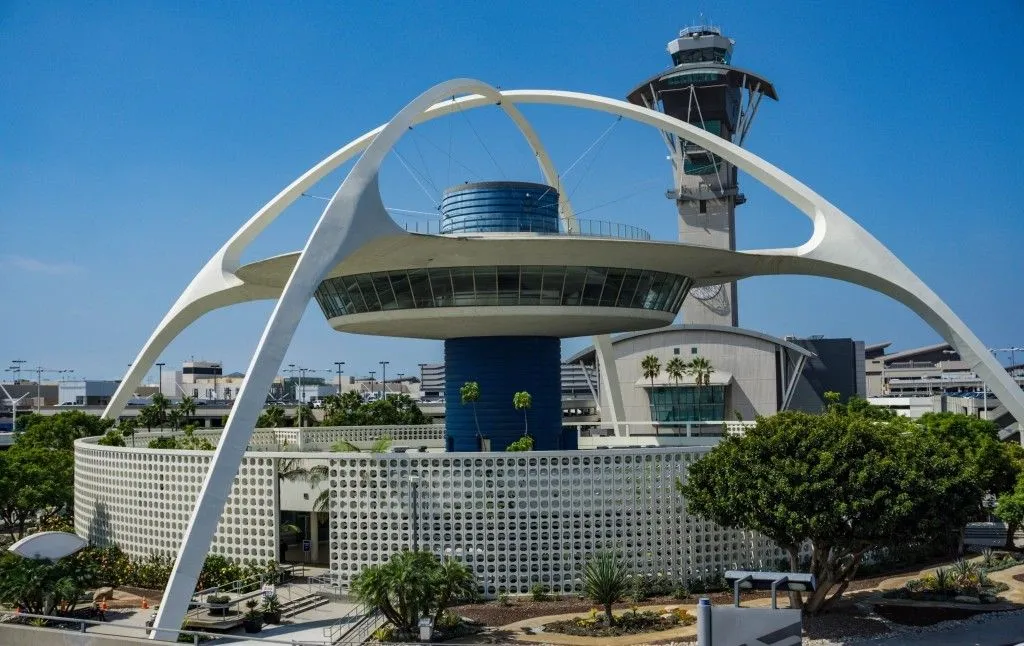
@LAX/4doors6windows.com
In June 2010, the building underwent a $12.3 million renovation, which included a seismic retrofit. Its parabolic structure has 135-foot arches and offers a 360-degree view of the airport. The exterior lighting, designed by Walt Disney Imagineering, adds to its space-age appeal.
Longaberger Basket Building
The Longaberger Company, a company that makes baskets, built a special building that looked like one of their baskets. It's made of steel, not wood, and it's 7 stories tall. The inside of the building is pretty cool too. It has a big, open space that looks like a park.
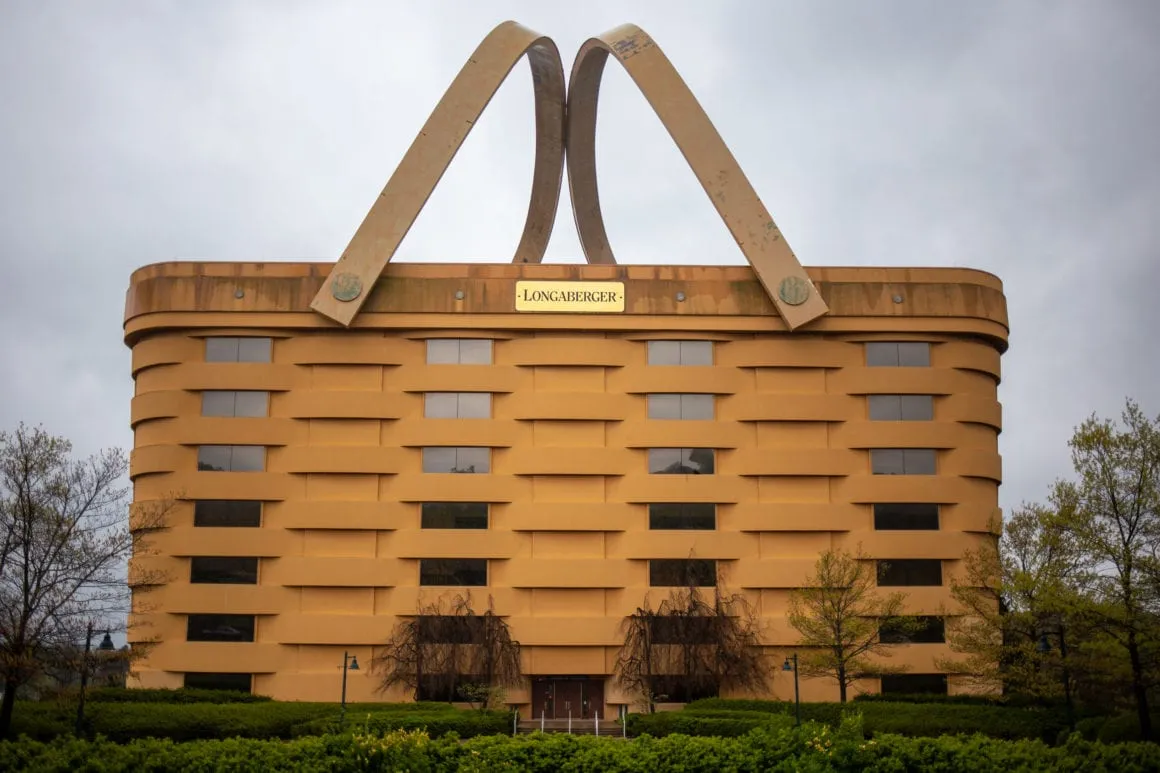
@Alexandra Charitan/roadtrippers.com
The building gets a lot of light from the skylights. This basket building is very big. It's 180,000 square feet and 196 feet tall. The handles on top of the building are even heated to keep ice from forming.
Wonderworks Museum
This building looks like it's upside down! But it's not broken. It's a fun museum called Wonderworks in Orlando, Florida. The building is three stories tall and it looks like it's been flipped over. One corner of the building is even pushing against another building.
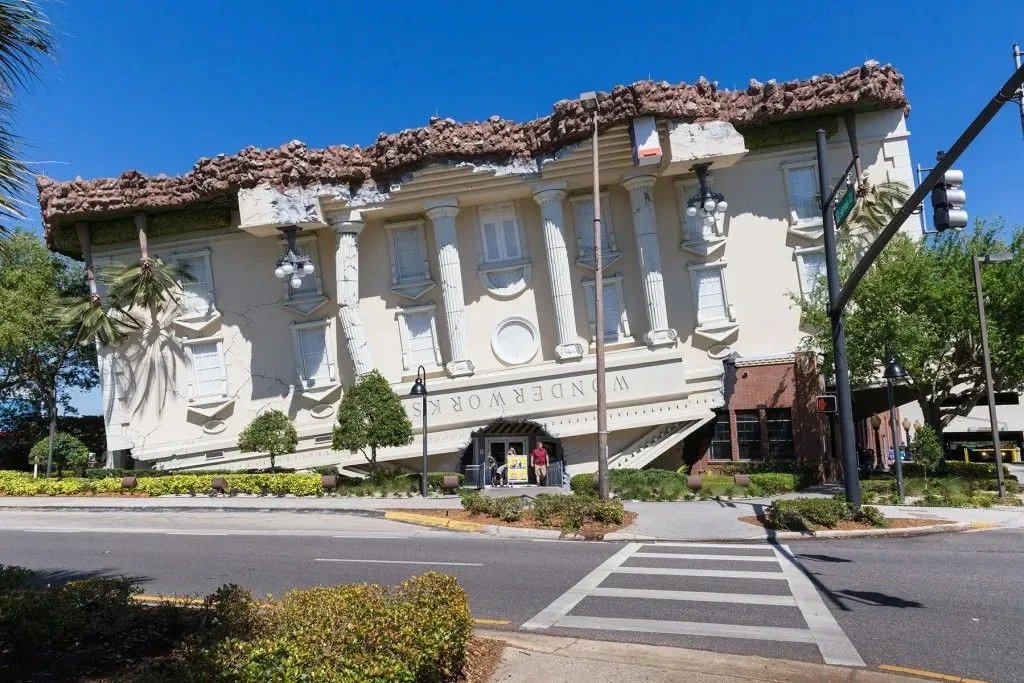
@WonderWorks Orlando/carltonautstraveltips.com
There are palm trees and lights hanging upside down too. Inside the building, there are lots of fun things to do. You can ride an attraction that simulates a hurricane or an earthquake. You can also see an exhibition about the Titanic.
Inntel Hotel Amsterdam-Zaandam
Inntel Hotel Amsterdam-Zaandam is a modern hotel located in Zaandam, near Amsterdam, Netherlands. Its design is unique, featuring a striking facade that combines traditional Dutch houses stacked on top of each other. The building's colorful and innovative architecture stands out in the area.
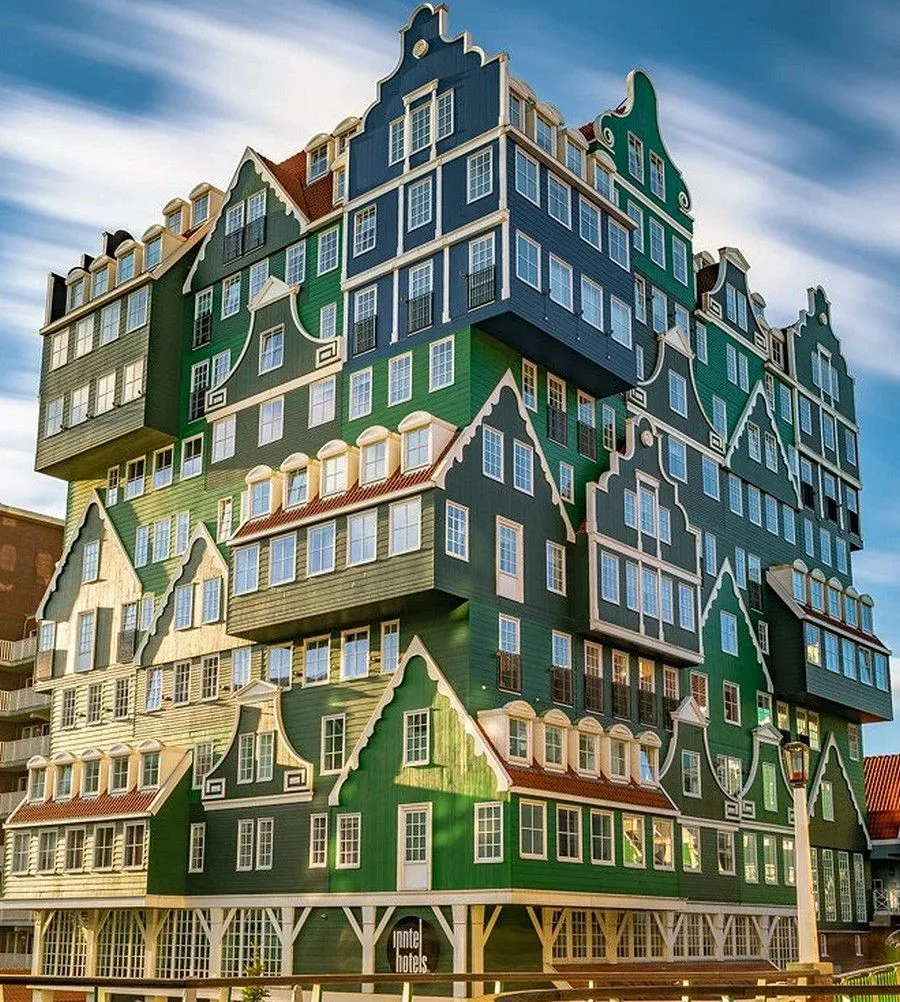
@Inntel Zaandam/uniqhotels.com
The hotel has nice rooms and other things guests need. Inside, you’ll find modern facilities, including a spa, fitness center, and restaurant. The hotel’s location makes it a great base for exploring both Zaandam and the nearby city of Amsterdam.
The Dog Bark Park Inn
The Sweet Willy bed and breakfast is a two-bedroom inn built in the shape of a giant beagle. It is locally famous and known as the World’s Biggest Beagle. Designed and constructed by Dennis Sullivan and Frances Conklin, the building opened in 2003.
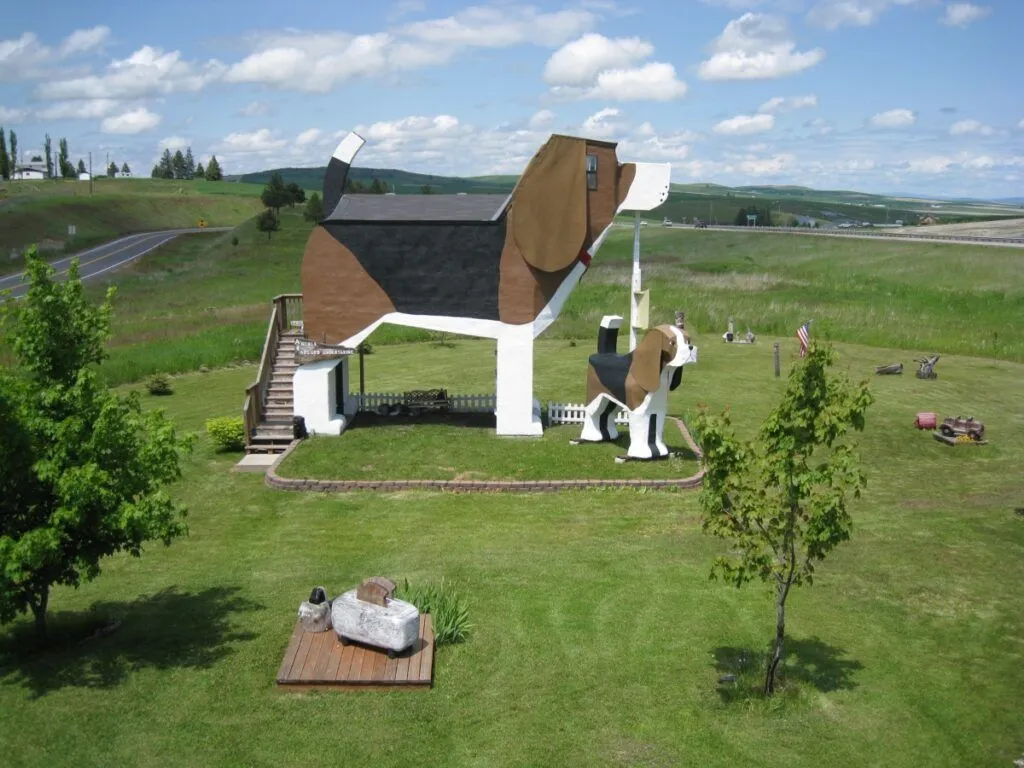
@Dog Bark Park Inn/hostunusual.com
The structure is a playful and unique attraction, drawing visitors who are looking for a one-of-a-kind place to stay. Guests enjoy not only the charming and distinctive design but also the cozy accommodations and welcoming atmosphere of the inn.
House Attack
House Attack is an unusual public art installation in Vienna, Austria. It features a large, modern building with a house seemingly thrown onto its roof. The installation was created by artist Erwin Wurm and is part of his One Minute Sculptures series. The piece is meant to challenge traditional ideas of architecture and perspective.
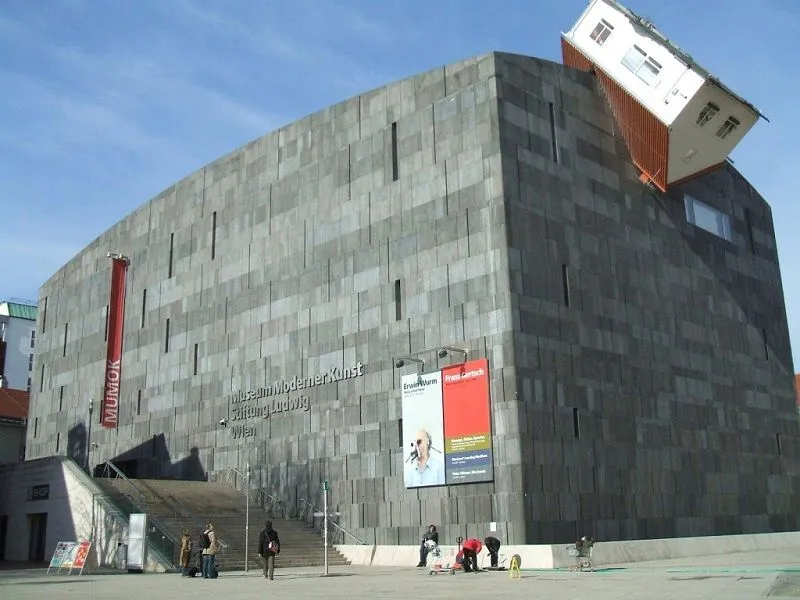
@Tommy Minh Nguyen/archihacks.com
It is located in front of the Museum Moderner Kunst, where it attracts attention from both locals and tourists. House Attack is a striking example of contemporary art that blends humor with creativity.
Nautilus House
The Nautilus House in Mexico City is very special. It was designed by a Mexican architect named Javier Senosiain. This house looks like a giant seashell, like the shell of a squid or octopus.
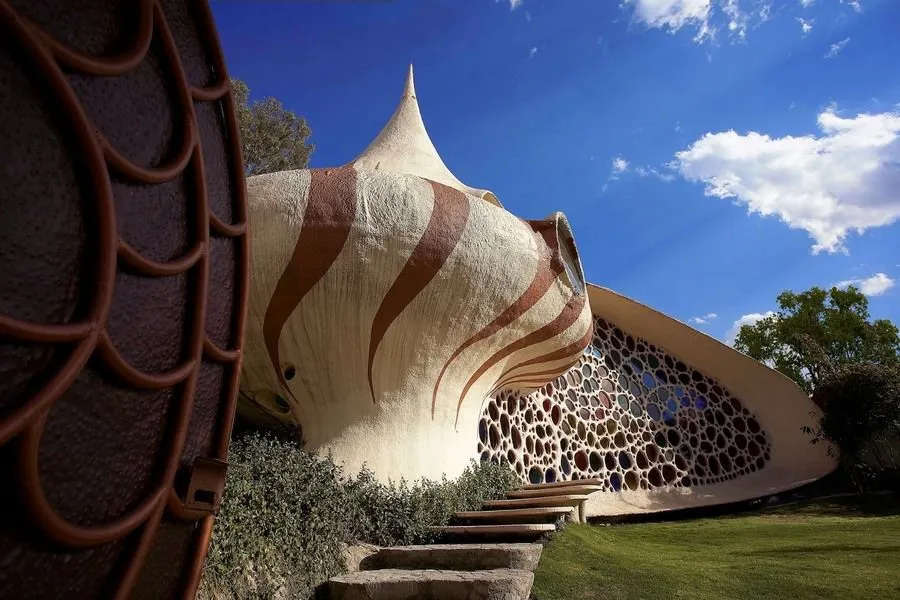
@Nautilus House by Arquitectura Organica/designdautore.blogspot.com
Javier Senosiain was inspired by famous architects like Gaudi and Frank Lloyd Wright. He wanted to create buildings that looked like things in nature. It took two years, from 2006 to 2007, to build this amazing Nautilus House.
Hang Nga
Imagine a really weird house that looks like something from a scary movie. That's Hang Nga House! It is in Vietnam and it was designed by a woman named Dang Viet Nga. She got her ideas from a famous architect named Antoni Gaudi. Dang Viet Nga didn't have a lot of money, so she used her own money to build the house.
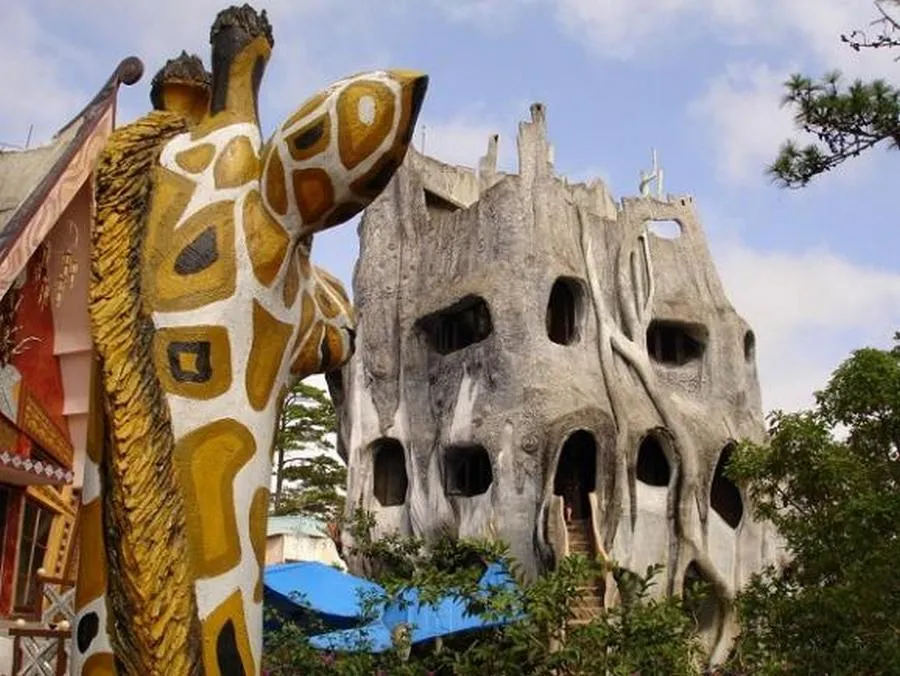
@Hang Nga Guesthouse/downtown07.blogspot.com
The government didn't want her to build it but she did it anyway. Instead of using blueprints, she drew pictures to show how she wanted the house to look. She also hired people who weren't professional builders to help her. The house has five floors, and each floor has a different theme. It looks like a big banyan tree, a rare architectural feat that makes it the only house of its kind worldwide.
Kansas City Library
The Community Bookshelf is a striking architectural feature of the Kansas City Public Library. Its facade, adorned with oversized book spines measuring 25 feet by 9 feet, showcases a diverse selection of 22 titles, catering to various literary tastes.
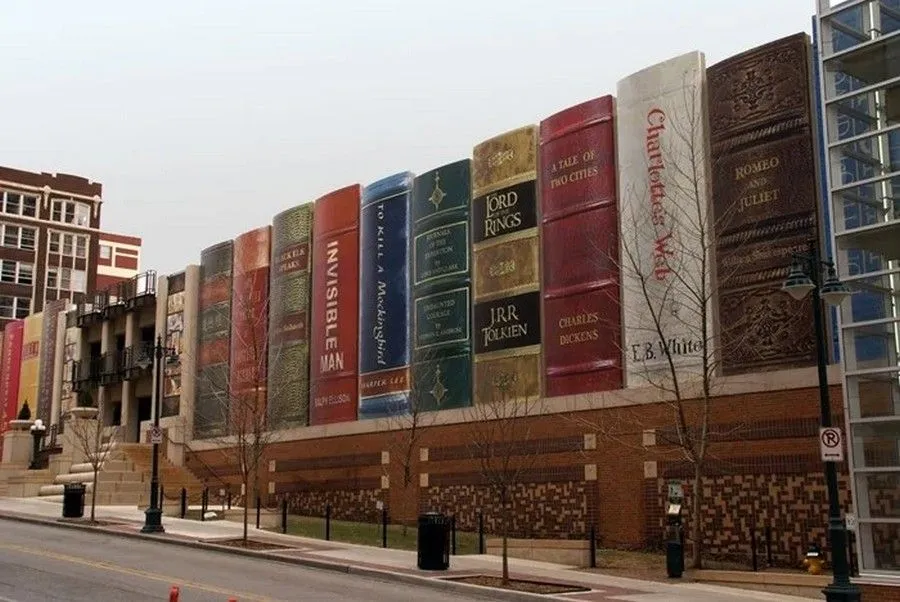
@omniscient_22/reddit.com
Constructed in 2004, the bookshelf serves a dual purpose: it enhances the library's aesthetic appeal while concealing an underlying parking garage. This innovative design was a collaborative effort, with the community actively participating in selecting the featured book titles.
The Little Crooked House
Kryzwy Domek, or the Little Crooked House, is a striking and unusual building in Sopot, Poland, completed in 2004. Designed by architects Szotynscy & Zaleski, it became an iconic landmark, often called the "showpiece of Sopot." The architects were inspired by the whimsical illustrations of children’s books by Jan Szancer.
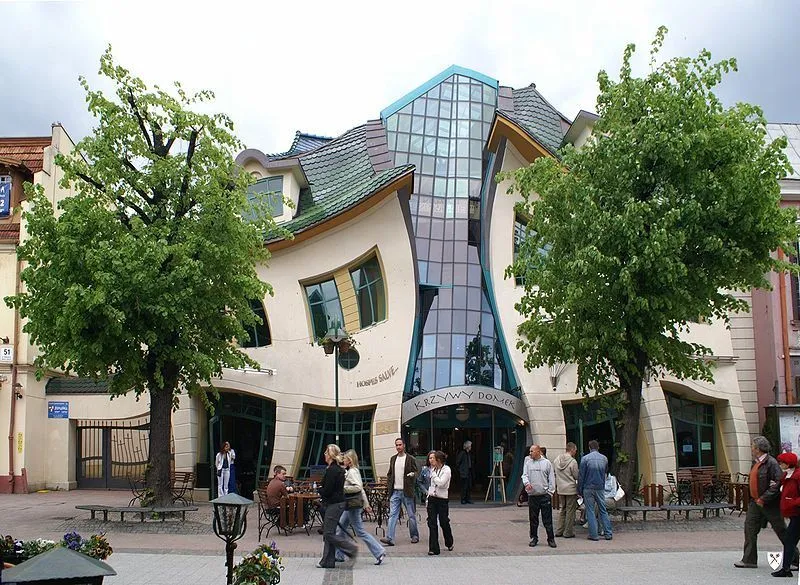
@Krzywy Domek/atlasobscura.com
The structure of the building is just as irregular as its facade, with curves and angles that challenge traditional architectural norms. Its design creates a surreal and mind-bending effect, making it feel like a building straight out of a haunted movie scene.
The Kunsthaus Graz
The Kunsthaus Graz is an innovative and striking building designed by architects Peter Cook and Colin Fournier. Its unique shape, often compared to a slug with many eyes, stands out in the city’s skyline. Colin Fournier affectionately referred to the building as "the friendly alien," highlighting its futuristic and unconventional design.
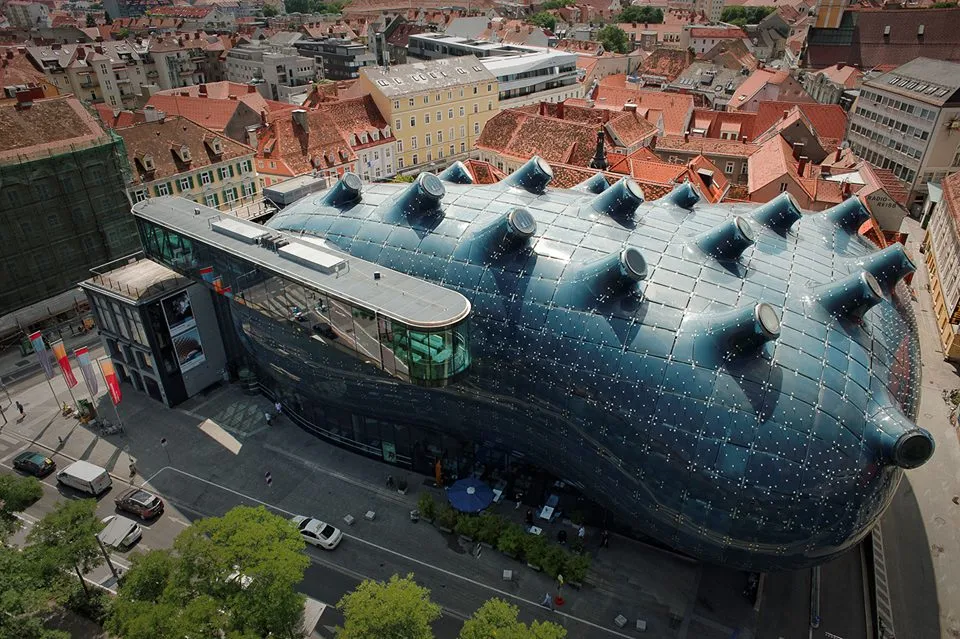
@The Graz Art Museum in Austria/constructionheadline.com
Built as part of the European Capital of Culture 2003 program, the Kunsthaus Graz has since become a major cultural landmark in the city. It attracts international visitors with its bold architectural style and serves as a space for contemporary art exhibitions.
Piano and Violin Building
The Piano and Violin Building in Huainan, China, was designed by architectural students from Hefei University of Technology. Completed in 2007, the building serves as a showroom for displaying development plans. The design features two parts: the violin section contains the building's vertical circulation, while the piano section houses the main function of the building.
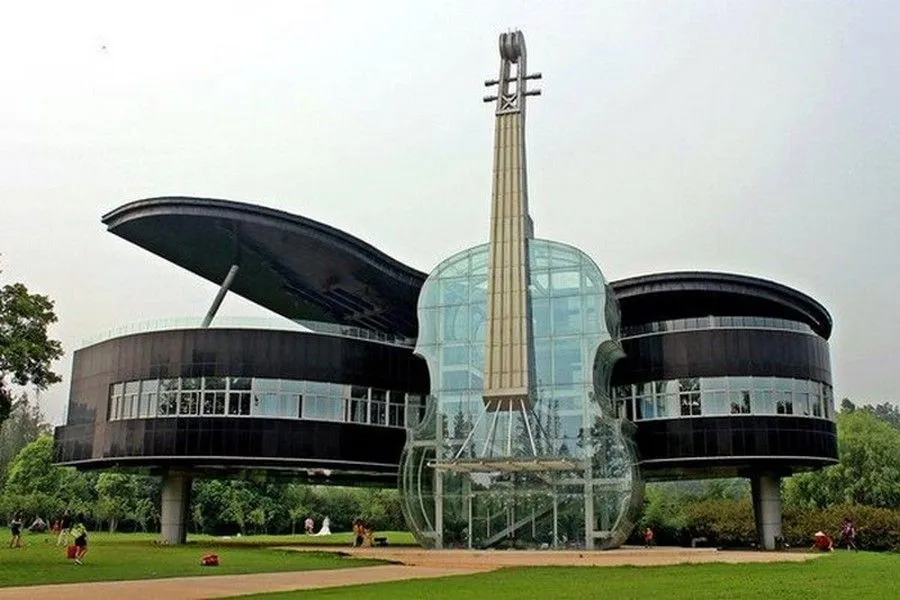
@Piano Building/designingbuildings.co.uk
This unique structure has become a popular tourist attraction, especially for newlyweds, who often refer to it as "the most romantic building in China." The building's distinctive shape and creative design make the building very special and easy to recognize.
National Fisheries Development Board
The "Fish Building," officially called the National Fisheries Development Board (NFDB) building, is a distinctive architectural marvel. Designed by India’s Central Public Works Department, this unique structure in Hyderabad exemplifies mimetic architecture, with its form reflecting its purpose.
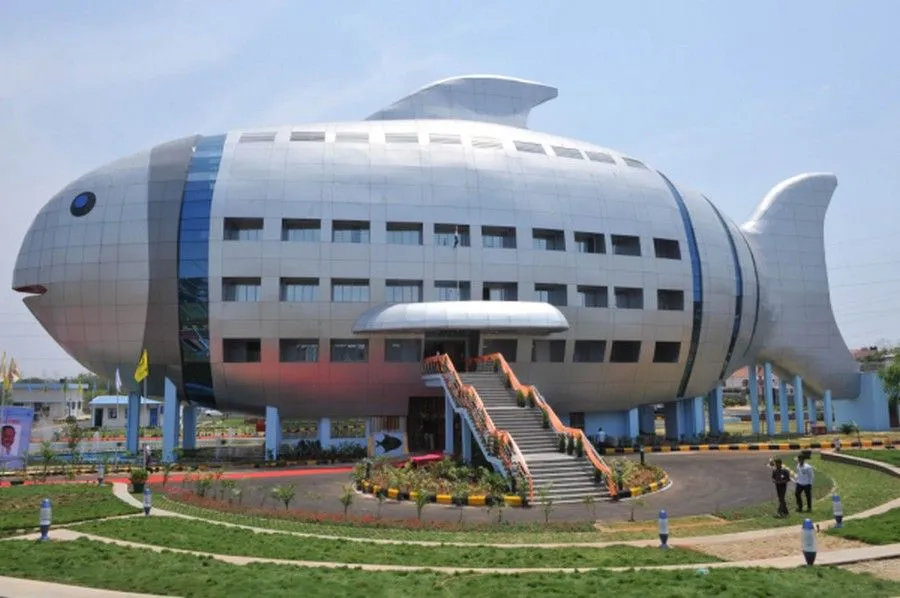
@National Fisheries Development Board/indiagk.net
Inspired by Frank Gehry’s renowned Fish sculpture in Barcelona, the NFDB building is shaped like a giant fish—an apt nod to its mission of supporting India’s fisheries industry. This daring, biomorphic design transforms the building into a living, breathing landmark.
Tree House by the Muskoka Lake
The Muskoka Lake Treehouse, known as the Four Trees, was designed by architect Lukas Kos and is located near the picturesque Muskoka Lake in the Canadian province of Ontario. This unique home is designed to accommodate a large family, providing both comfort and a fascinating connection with nature.
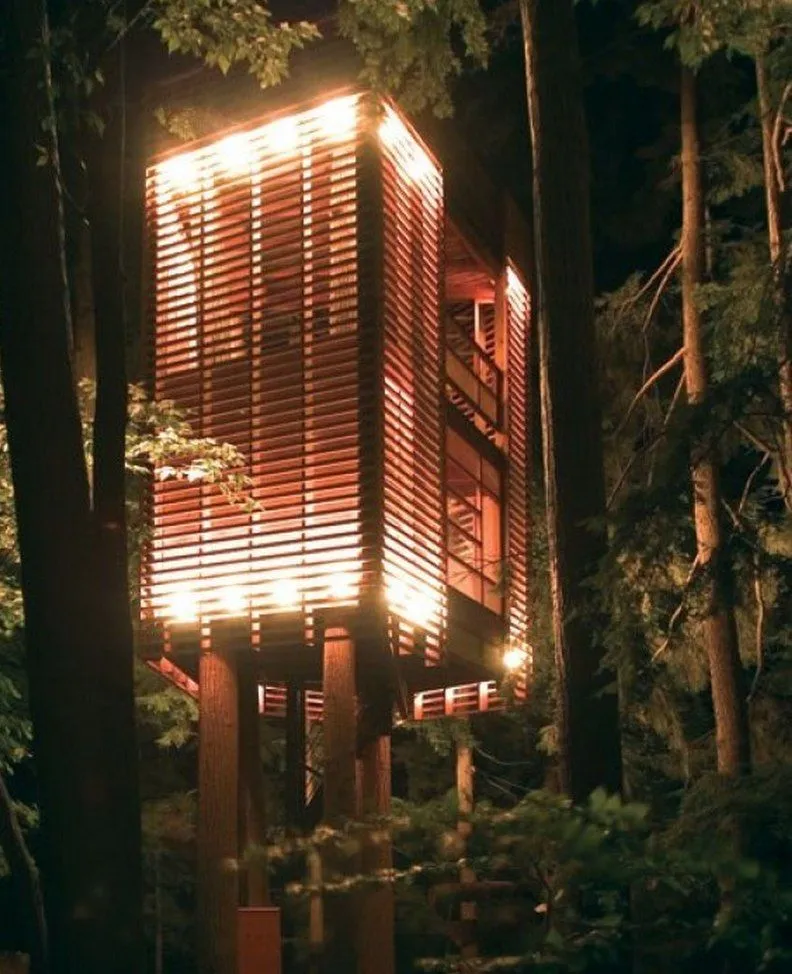
@Courtesy of Four O Nine/huffpost.com
The peculiarity of the house is that in strong winds it sways slightly. However, there is no reason to worry: to ensure stability and safety, the architect used strong steel cables that give the structure flexibility and reliability. This structure allows the residents to feel like a part of the surrounding forest.
House on the Tree like a Gift
This charming treehouse, carefully constructed around a mature pear tree in Germany, was a heartfelt gift from a wife to her husband. Designed to harmonize with the surrounding landscape, the structure provides a cozy and peaceful retreat elevated among the branches.
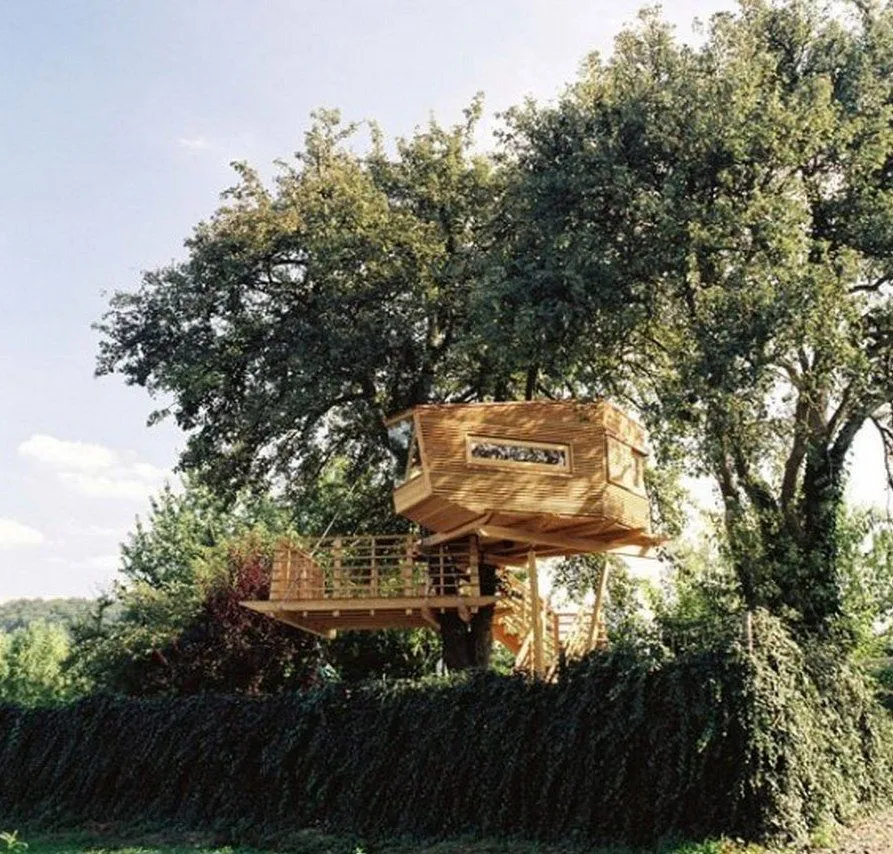
@Alasdair Jardine/huffpost.com
The treehouse combines natural beauty with a sense of adventure, offering a secluded escape where one can relax, unwind, and enjoy the serenity of nature from a unique vantage point. Thoughtful details make it both a personal sanctuary and a testament to the love and creativity behind its design.
The Tea House
The Tea House, created by Japanese architect Terunobu Fujimori, resembles a whimsical gingerbread house perched among Japan's stunning cherry blossom trees. While it looks like something from a fairytale on the outside, the interior surprises with a sleek, minimalist design. Fujimori designed this treehouse to move gently with the tree during windy weather.
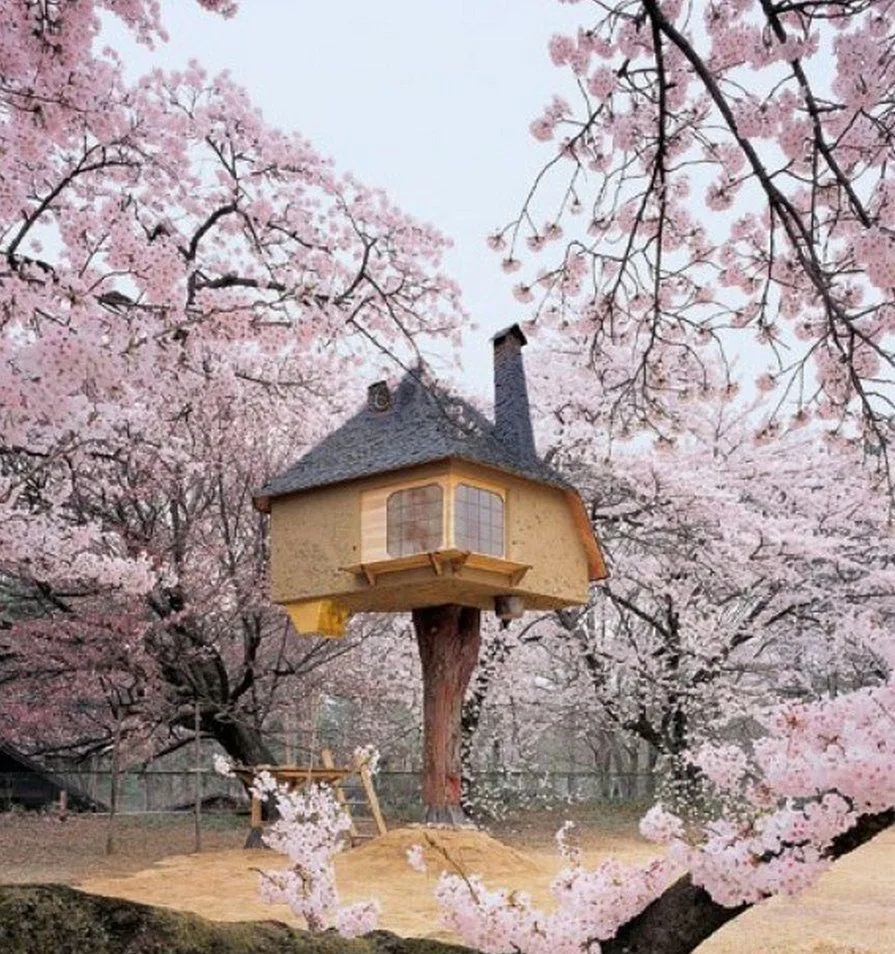
@Akihisa Masuda/huffpost.com
But the same time the construction of the house ensures its stability while giving guests a unique experience of swaying with nature. This enchanting yet modern retreat blends traditional Japanese aesthetics with innovative architecture, creating a serene escape amid the cherry blossoms.
The Big Duck on Long Island
In 1931, a local duck farmer named Martin Maurer had a rather unusual idea. He wanted to build a building shaped like a duck to sell his eggs. Little did he know that this quirky structure would go on to inspire a whole new architectural movement. The 10-ton duck-shaped building caught the eye of renowned architects Robert Venturi and Denise Scott Brown.
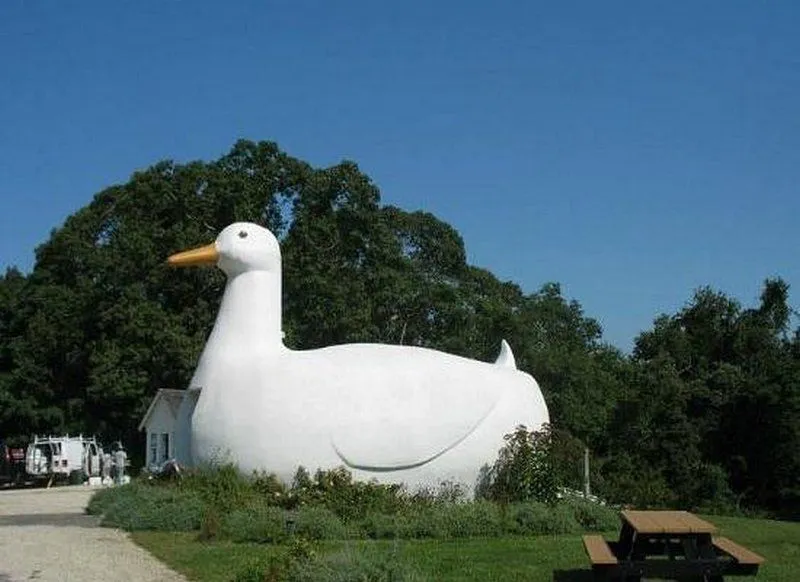
@Mac Gramlich/architecturaldigest.com
They were so intrigued by this unique design that they coined the term "duck architecture" to describe buildings that represent the activities or products within them. The Big Duck, as it's affectionately known, became the quintessential example of this architectural style.
Azerbaijan National Carpet Museum in Baku
This striking building in Baku houses the Azerbaijan National Carpet Museum, where an extensive collection of Azerbaijani carpets is on display. The museum celebrates the artistry and history of carpet weaving, showcasing both ancient techniques and contemporary designs.
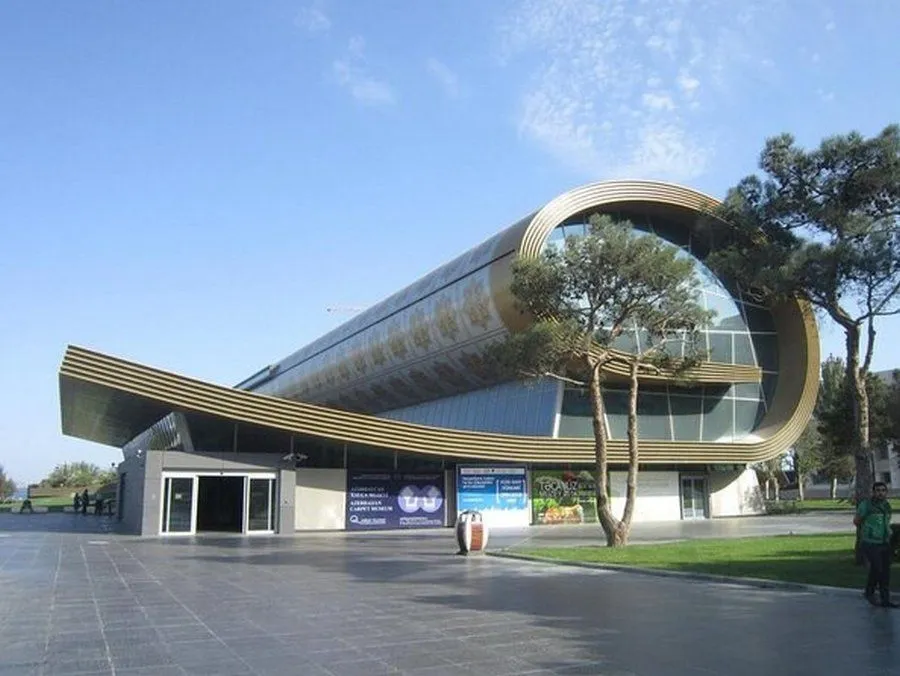
@Azerbaijan National Carpet Museum/viator.com
The building’s design, by Austrian architect Franz Janz, creatively resembles a rolled carpet, symbolizing the significance of carpet-making in Azerbaijani culture. After six years of careful construction, this architectural marvel has risen, a testament to the intricate beauty of Azerbaijani carpets.
Quetzalcóatl Nest
Quetzalcóatl Nest, located in Mexico City, is a remarkable architectural complex inspired by the ancient Aztec deity Quetzalcóatl, symbolized as a feathered serpent. Designed by architect Javier Senosiain, the structure takes the form of a winding, snake-like shape that appears to emerge from the earth.
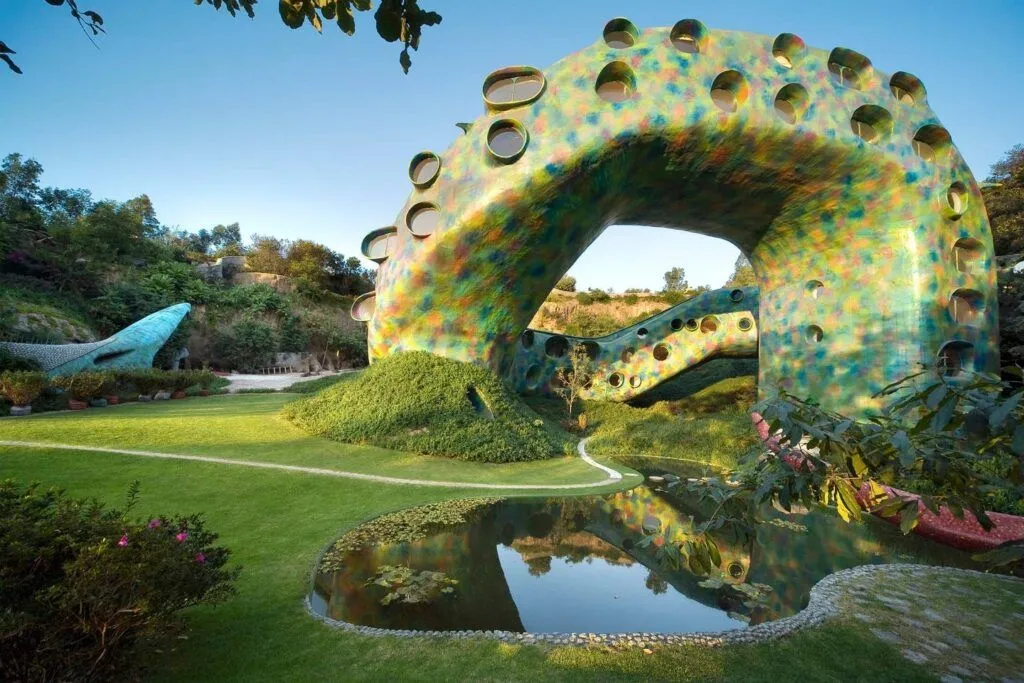
@Photos of Quetzalcoatl’s Nest/hostunusual.com
The complex features ten residential apartments nestled within its curving structure, offering a unique living experience surrounded by lush gardens, caves, and water features. A masterpiece of organic design, Quetzalcóatl Nest dances in harmony with nature. An interesting fact is the singer Dua Lipa even made a stop there.
CSAV Headquarters in Valparaíso, Chile
The headquarters of CSAV, a Chilean shipping company, showcases an intriguing example of facadism, an architectural technique where a new structure is built around or behind a preserved facade. In this design, a sleek, modern building emerges from within the historic facade, creating a striking contrast between the old and the new.
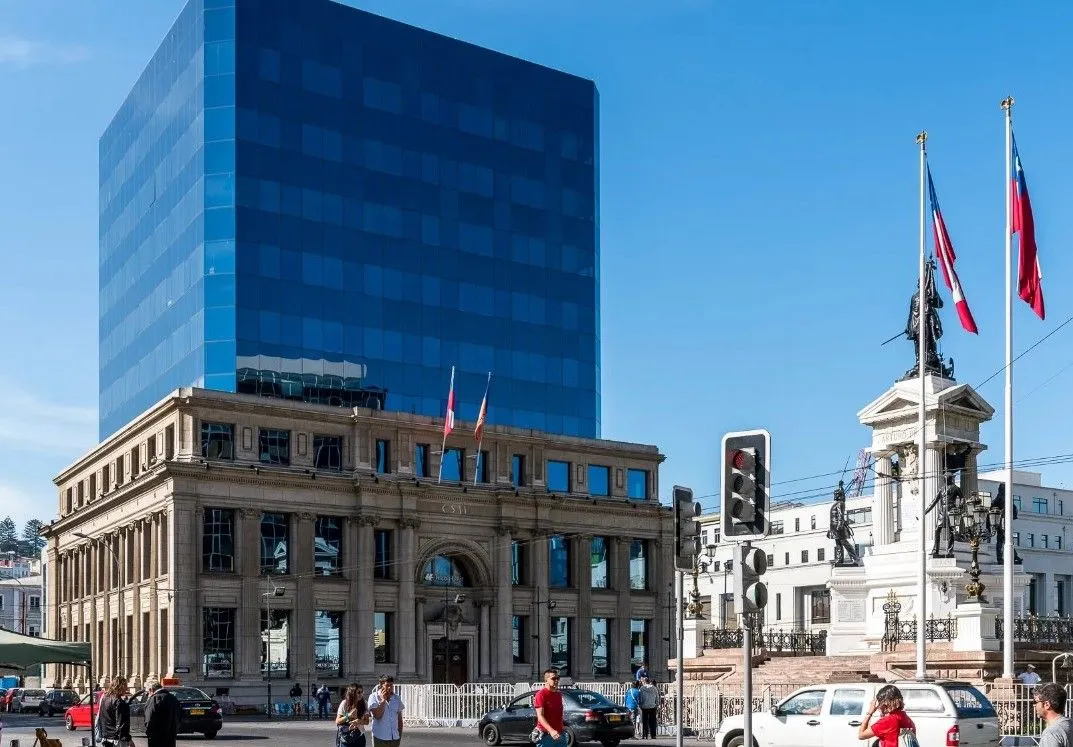
@Valparaiso – New Year’s Eve in the Chilean port city/travelita-blog.com
The result is a dramatic visual transition, where the original architecture is maintained as a focal point, while the new addition brings a contemporary edge to the space. This innovative approach blends tradition with modernity, highlighting the rich history while embracing forward-thinking design.
Half House
This Victorian townhouse in Toronto stands out because it wasn’t originally designed to look the way it does today. Once part of a row of similar homes, the property was the last to remain when developers sought to redevelop the street. All the families sold their homes except for the Valkos, who chose to keep their property.
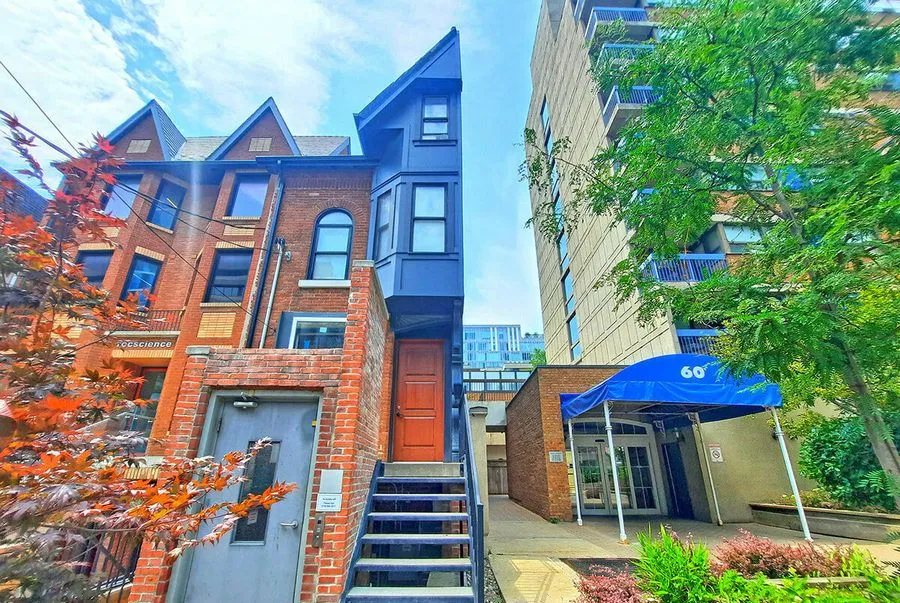
@Toronto’s Half House/explanders.com
In a bold move, the developers tore down all the neighboring houses, leaving the Valkos' home standing, now appearing as if it were sliced right down the middle. The result is an unusual and striking sight—a solitary Victorian house surrounded by modern developments.
Niimi Building
Niimi’s building in Tokyo, located in the vibrant Asakusa district, is a striking example of creative architecture. The building stands out with its distinctive teacup-shaped balconies, a bold and whimsical design choice that reflects the company’s focus on kitchenware. These oversized teacups serve as functional outdoor spaces, giving the building a playful yet unique character.
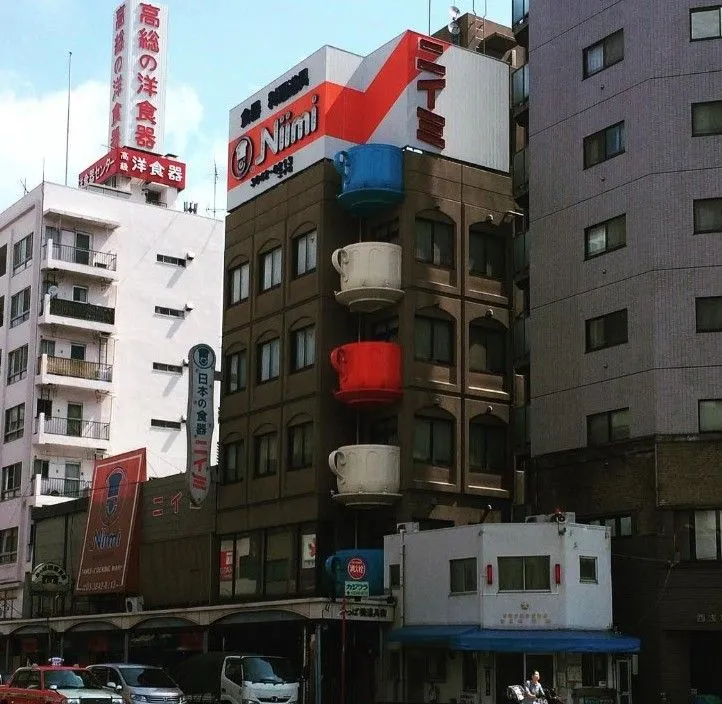
@walking.biking.japan/instagram.com
Asakusa is famous for housing the Senso-ji Buddhist temple, one of the oldest and most significant temples in Japan. The building’s design offers a modern contrast to the traditional architecture of the area. The combination of contemporary and historical elements makes the building an iconic part of Asakusa’s evolving cityscape.
Thin House
The South Kensington block of flats, known as the "Thin House," is famous for its incredibly narrow design. It measures just six feet at its narrowest point. Despite its compact size, the building maximizes the use of space, with cleverly designed interiors that make the most of its slim proportions.
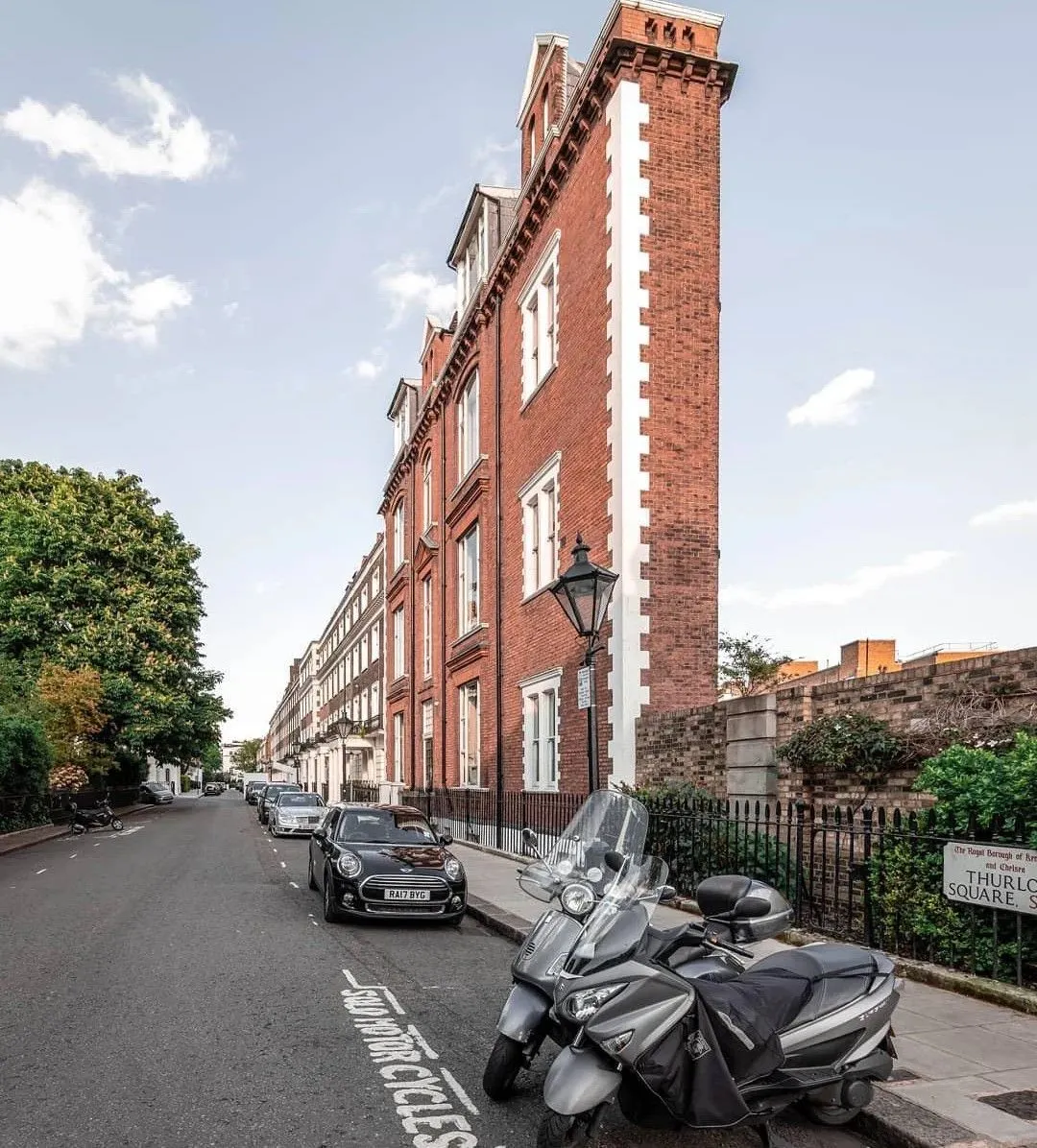
@Gooner228/reddit.com
The "Thin House" stands as a unique architectural curiosity, showcasing how innovative design can transform even the tightest spaces into functional living areas.
The Smallest House
The Smallest House in the UK, located in the historic town of Conwy, Wales, is a remarkable example of how people once lived in extremely compact spaces. Measuring just 10 feet wide and 6 feet deep, the house is often referred to as a "micro home". It is one of the smallest properties ever recorded in the UK, originally built in the 16th century as a fisherman’s cottage.
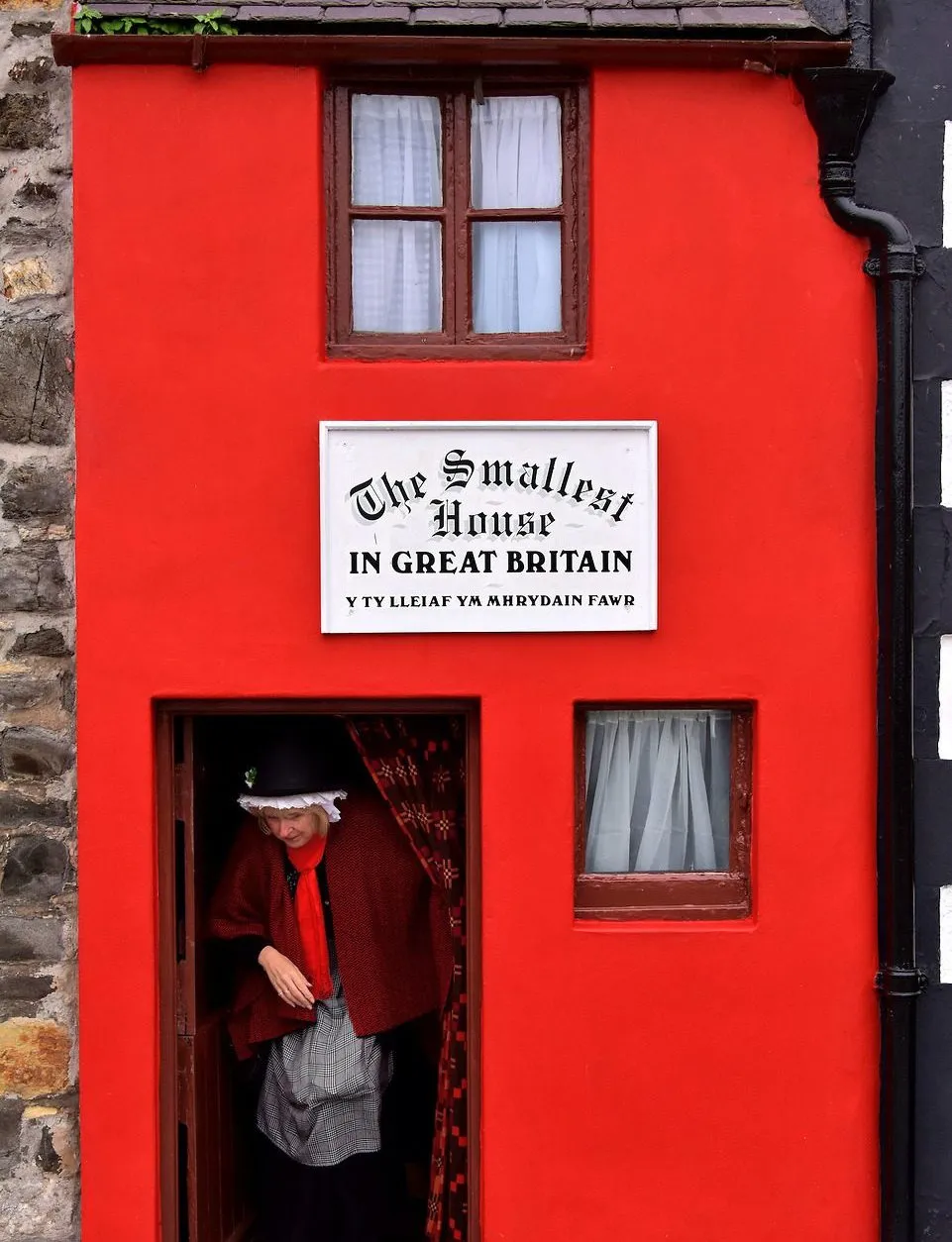
@Encircle Photos/encirclephotos.com
But then it remained a home for several centuries before being preserved as a tourist attraction. Inside, the house features just enough room for a small living area, a basic kitchen, and a single bed, reflecting how individuals in the past adapted to limited space.
The Cliffs of Moher Visitor Experience
The visitor center, tucked away on a grassy hill, was built in 2007. In this huge man-made cave, tourists are introduced to paintings, photographs, and interactive and natural exhibits. The Visitor Experience is divided into 4 key parts that highlight the most interesting aspects of the interaction between the Ocean, Rocks, Nature, and Humans.
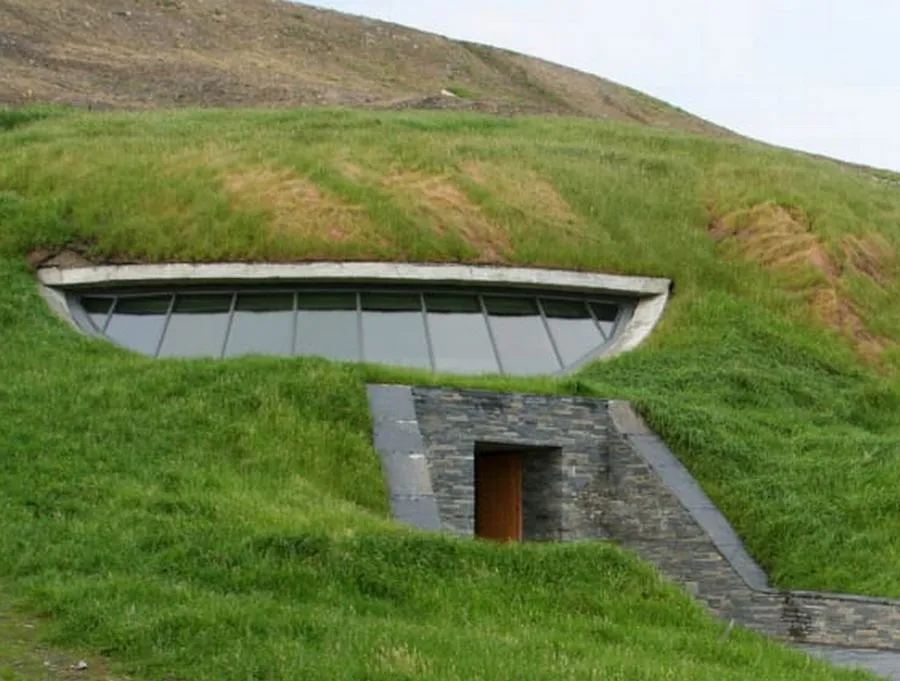
@Tobias Roberts/buildwithrise.com
There is also a theatre, long tunnels, and a children's playground where little travelers can get a closer look at wildlife. The complex runs solely on environmentally friendly regenerative (or green) energy sources: solar, geothermal, and wind.
The Guitar House
In the American town of Fayetteville, Georgia there is a house in the shape of a guitar. The two-story building was begun in 1971 by Vietnam War veteran and country musician Elvis Carden.
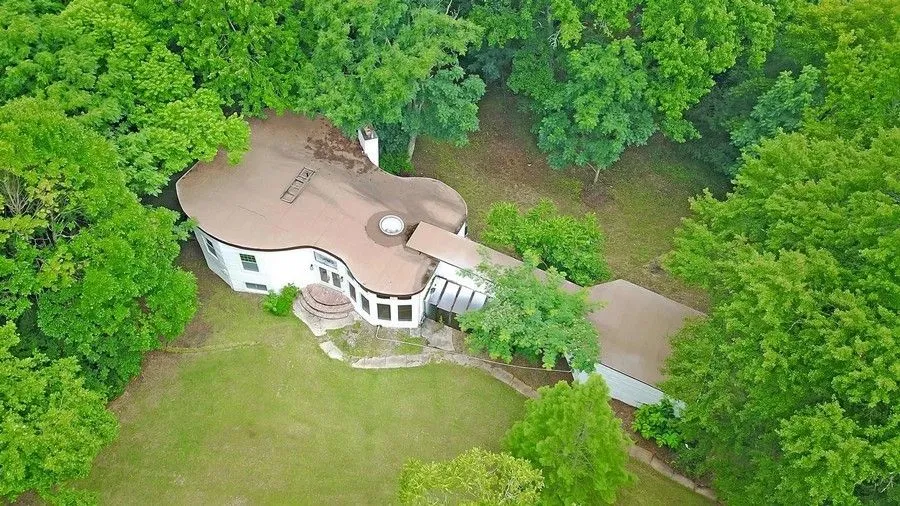
@Katherine McLaughlin/architecturaldigest.com
The work, which Cardin carried out independently with the help of his father, lasted for 16 years. In the end, he got the house of his dreams. The 290-square-meter building has 5 bedrooms and 4 bathrooms.
Airplane House
In the scenic village of Miziara, Lebanon, the Airplane House designed by architect Aziz Taher stands as a captivating architectural marvel. Inspired by the form of a commercial airplane, this distinctive structure soars above the landscape.

@earthmoonsun/reddit.com
Aziz Taher's meticulous design integrates the home's functionality with its artistic expression, creating a living environment that responds to modern needs while honoring the region's cultural heritage.
The Pineapple House
The Pineapple House was built in the 1780s by the Earl of Dunmore, the house features a large stone pineapple sculpture above its front door. It symbolizes the Earl's great wealth and status. At the time, pineapples were an exotic rarity, often associated with luxury and extravagance.
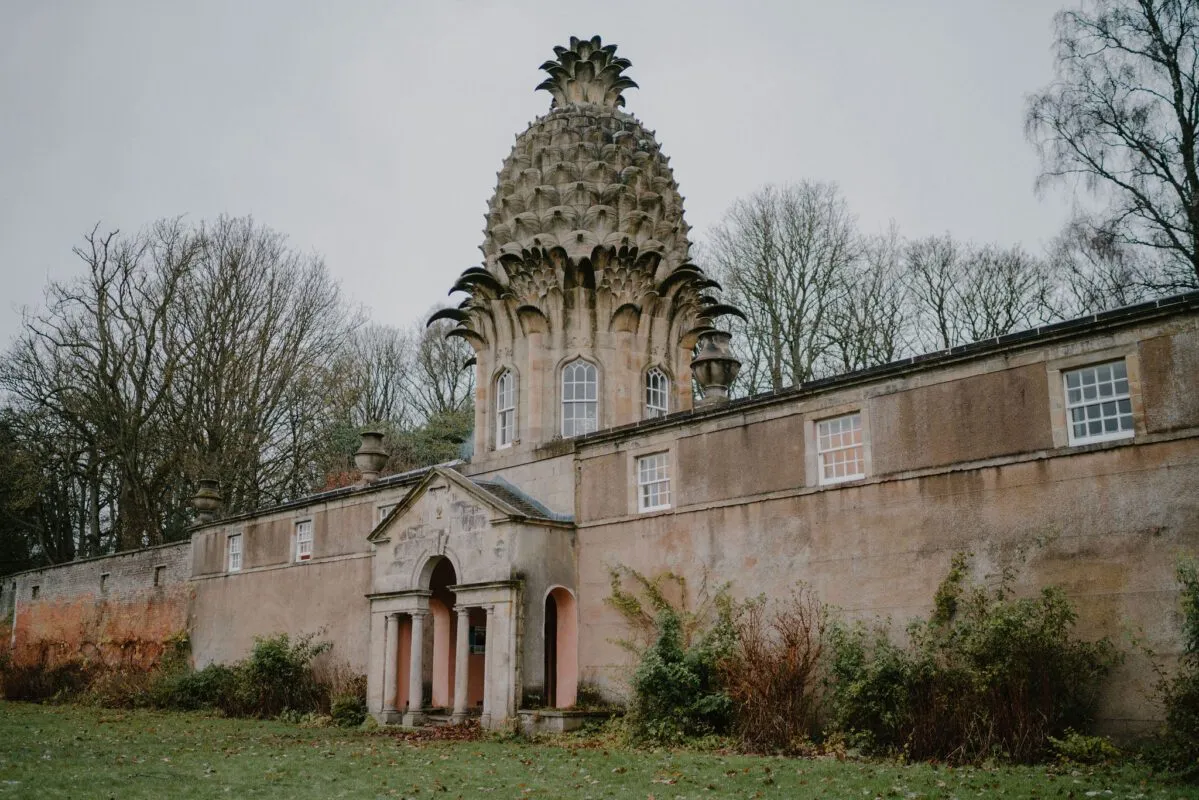
@Tripadvisor/nts.org.uk
The house and its surrounding grounds, which include a walled garden and charming landscapes, were once part of the Earl's estate. Today, they are maintained and cared for by the National Trust for Scotland, allowing visitors to experience this extraordinary piece of architectural history.
The Flintstones House
The Flintstone House features a design that resembles the prehistoric, cartoonish world of Fred and Wilma Flintstone. The building was located in the hills of Hillsborough, California in 1976 by architect William Nicholson.
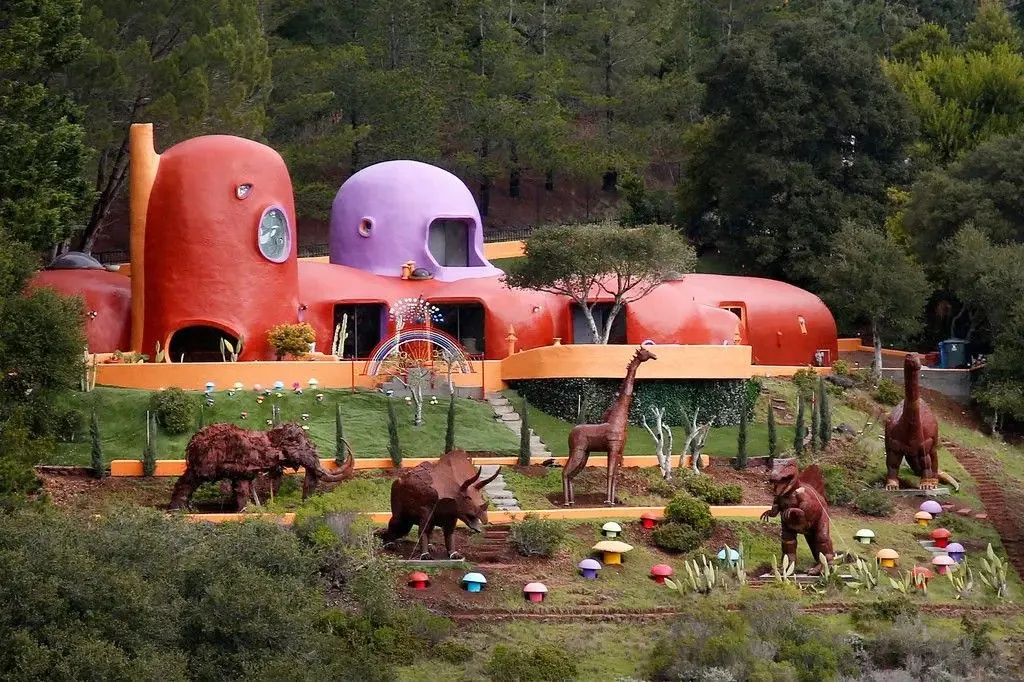
@Odd It Was Declared a ‘Public Nuisance’/nytimes.com
The structure, often described as "cave-like," features rounded, organic shapes and large, smooth stone-like walls that give it a unique, whimsical appearance. Its design also incorporates bold, retro elements, with bright colors and unconventional materials, making it look like a modern take on a stone-age dwelling.
The UFO House
In the late 1960s, Dr. Jaakko Hiidenkari envisioned a specialized type of dwelling: a house that was both easily transportable and rapidly heat-able, even in frigid environments such as Antarctica. To solve this problem, he asked a Finnish architect named Matti Suuronen to design it. Suuronen was inspired by the space age and created a unique house that looked like a flying saucer.
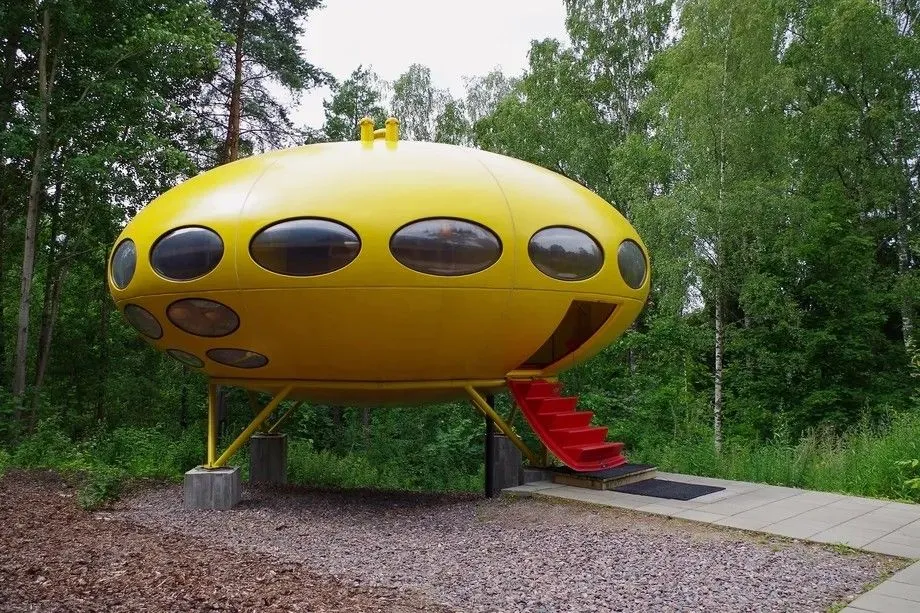
@Megan Barber/archive.curbed.com
The UFO House was round and had no sharp corners. It had a built-in fireplace, a bedroom, a bathroom, and a living room. The house could be heated very quickly, even in extremely cold temperatures. About 64 of these futuristic houses were built and placed in many different locations, from Los Angeles to Antarctica.
The Weird Wooden Building
Timber buildings with unusual forms have become a defining trend in modern architecture, as architects experiment with wood’s flexibility to create striking, unconventional shapes. Using techniques like cross-laminated timber (CLT) and glulam (glued laminated timber), designers can mold wood into curves.
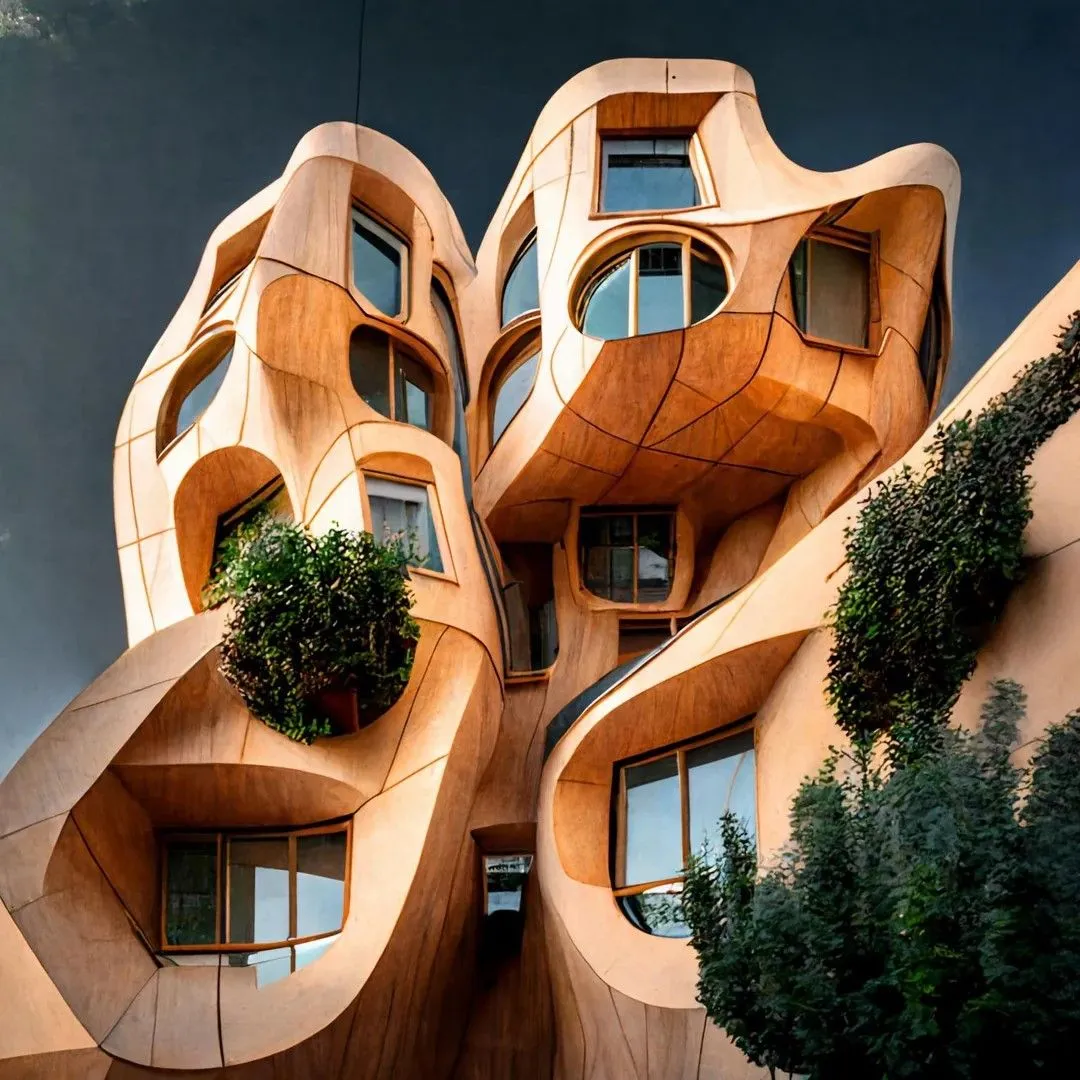
@OtherCryptographer3/reddit.com
Also, it can mold waves and even twists that were once only achievable with steel or concrete. This adaptability allows for the creation of buildings that resemble natural forms, making timber an ideal material for biomimetic and avant-garde designs.
The BMW Headquarters
The BMW Headquarters in Munich, Germany, was completed in 1972 and designed by Austrian architect Karl Schwanzer. The building's architectural design was inspired by the shape of a car engine's four cylinders - a fitting homage to BMW's automotive legacy.
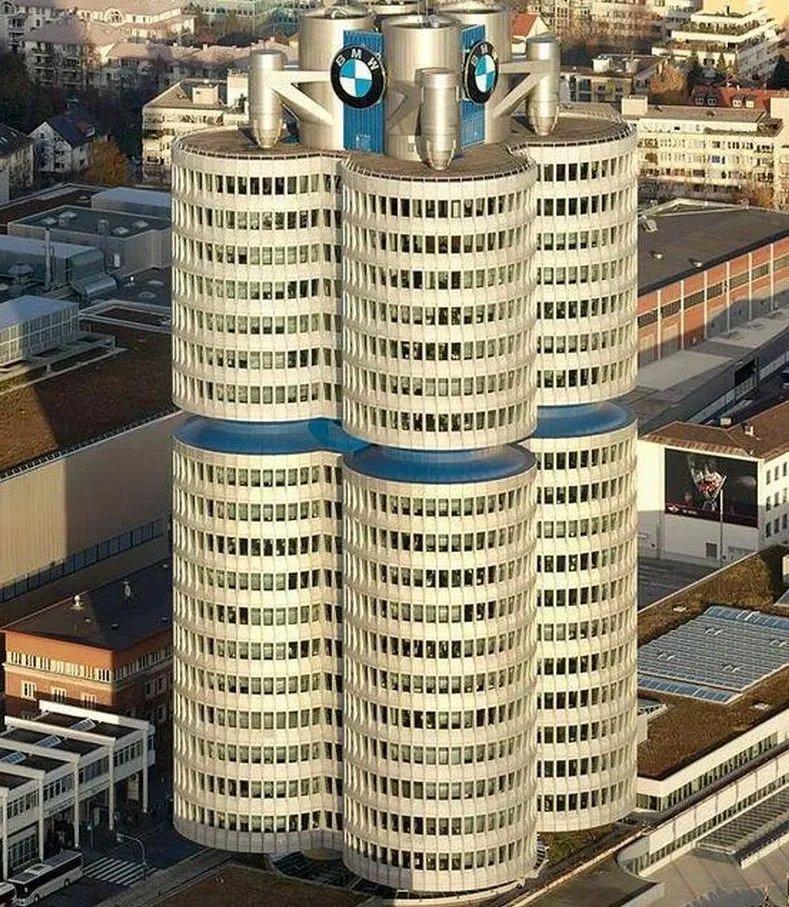
@TensionOutrageous409/reddit.com
Standing at 101 meters tall, the building has since become a landmark in Munich and a symbol of the BMW brand. The main structure has four round towers. They seem to hang from a central support. Next to it is the BMW Museum, showcasing the company's history.
Valley Building
In Amsterdam, the Netherlands, the Valley Building stands as an architectural marvel designed by MVRDV. This striking structure seamlessly integrates with the city's landscape, redefining modern urban living. At the heart of the Valley Building's design is a commitment to sustainability, incorporating renewable energy and efficient water management systems.
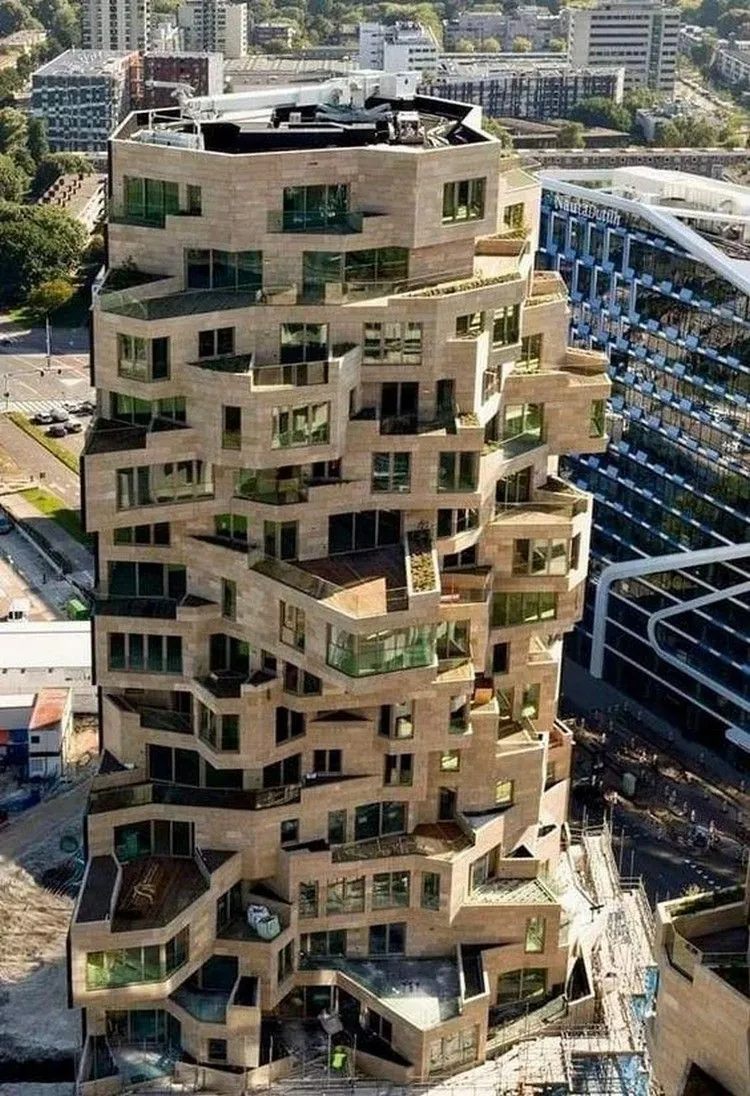
@Friendly-Appeal73629/reddit.com
Beyond its architectural significance, the building serves as a hub of community and cultural exchange, catering to a dynamic, cosmopolitan population. As a testament to innovative design, the Valley Building has garnered international acclaim, showcasing how architecture can redefine our experience of the built environment.
Fermi National Accelerator Laboratory
Fermilab, a renowned science center in Illinois, houses a fantastic building called Wilson Hall. Designed by the visionary physicist Robert Wilson, the building is as much a work of art as it is a scientific hub. Its distinctive, double-curved structure, reminiscent of soaring cathedral arches, creates a dramatic, open space at its heart.
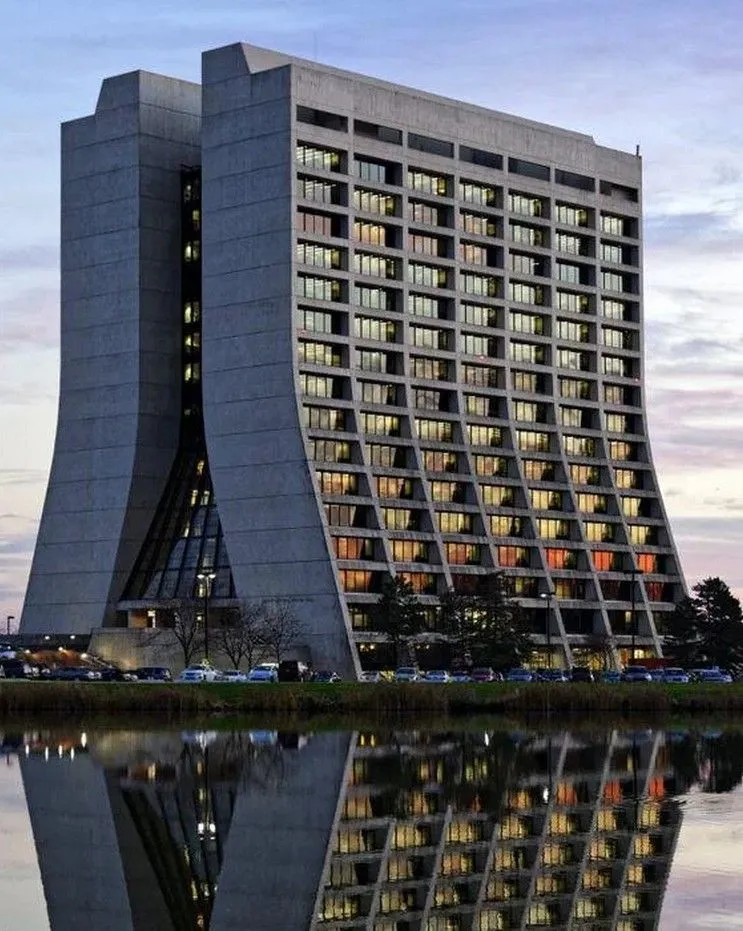
@Jolly_Confidence_653/reddit.com
Beyond its aesthetic appeal, Wilson Hall symbolizes the boundless nature of scientific inquiry. Its soaring height and vast glass walls offer breathtaking views of the surrounding landscape, inspiring awe and wonder. As a hub for cutting-edge research, Wilson Hall embodies the spirit of exploration and discovery that drives Fermilab's mission to unravel the mysteries of the universe.
Ohjo Building Kabukicho
The historic Ohjo Building, a 1964 landmark, is an iconic structure, nestled in the heart of Kabukicho, and has evolved over the decades from a classic music café to a vibrant cultural hub. Originally a gathering place for music enthusiasts, the building became a beloved part of Tokyo's entertainment district, drawing artists, musicians, and creatives from all over.
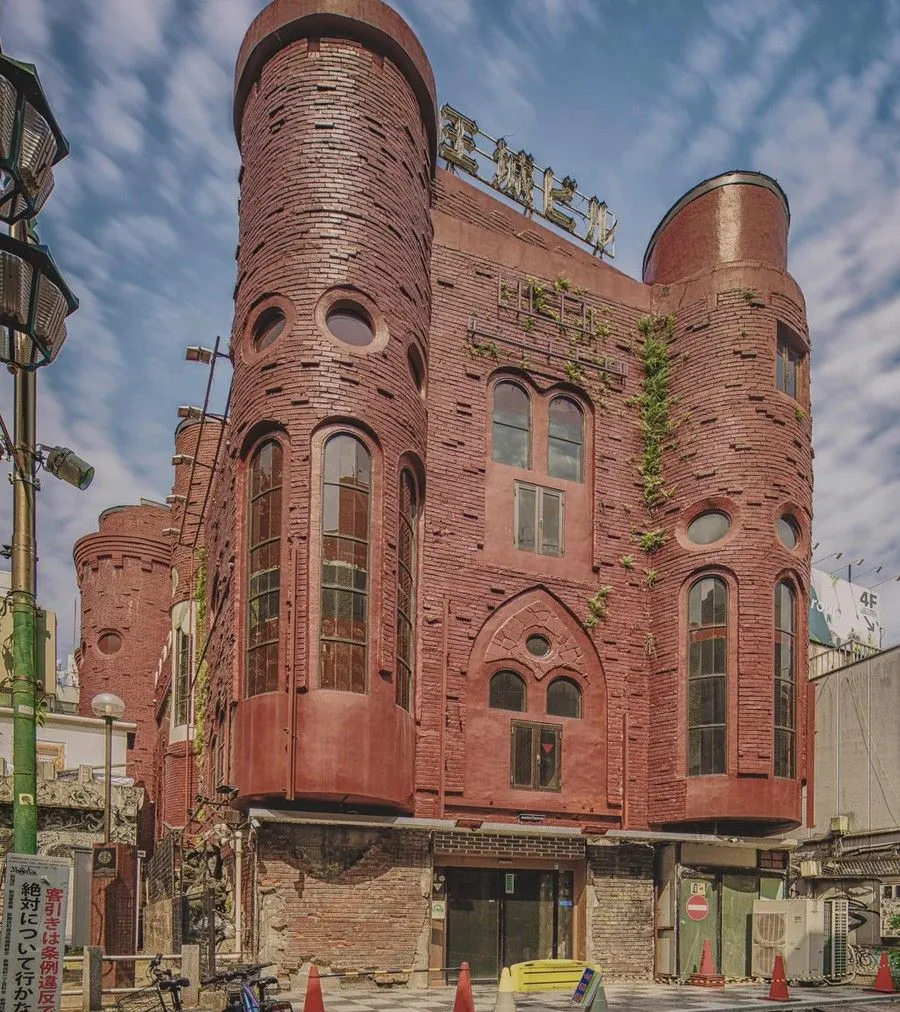
@biwook/reddit.com
Today, it hosts a variety of eclectic spaces, including modern art galleries, themed cafés, and small theaters, making it a unique blend of old and new. The Ohjo Building’s architecture reflects its rich history, with its retro design elements preserved alongside contemporary updates that embrace Tokyo’s evolving culture.
The Strawberry House
The Strawberry House in Bom Princípio City, Brazil, stands as a playful tribute to the region’s reputation for strawberry cultivation. This whimsical building, shaped like a giant strawberry, is not only a local landmark but also a celebration of the area’s agricultural identity.
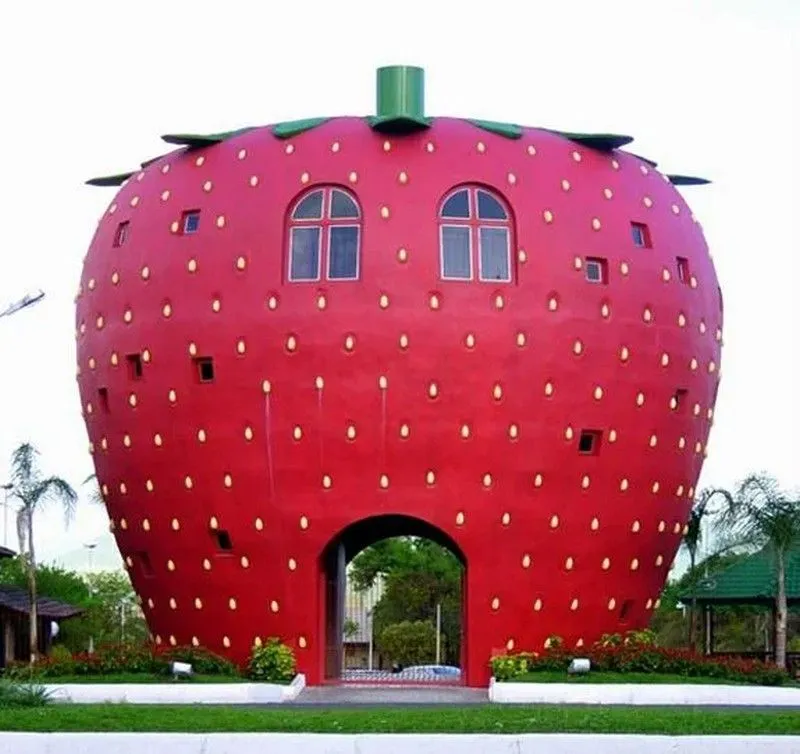
@RedRiverWindsock/reddit.com
Inside, the Strawberry House serves as a visitor center, providing information on the city’s strawberry production, local festivals, and agricultural heritage. With its bright red exterior and green "leaves" on top, it instantly catches the eye, attracting both locals and tourists.
Maison du Sel
Maison du Sel, or the "House of Salt," is a historic building in Wissembourg, a charming town in the Alsace region of France. Constructed in the 15th century, this building originally served as a storage facility for salt—a valuable and highly taxed commodity in medieval France. Its distinctive timber-framed architecture is typical of the Alsatian style.
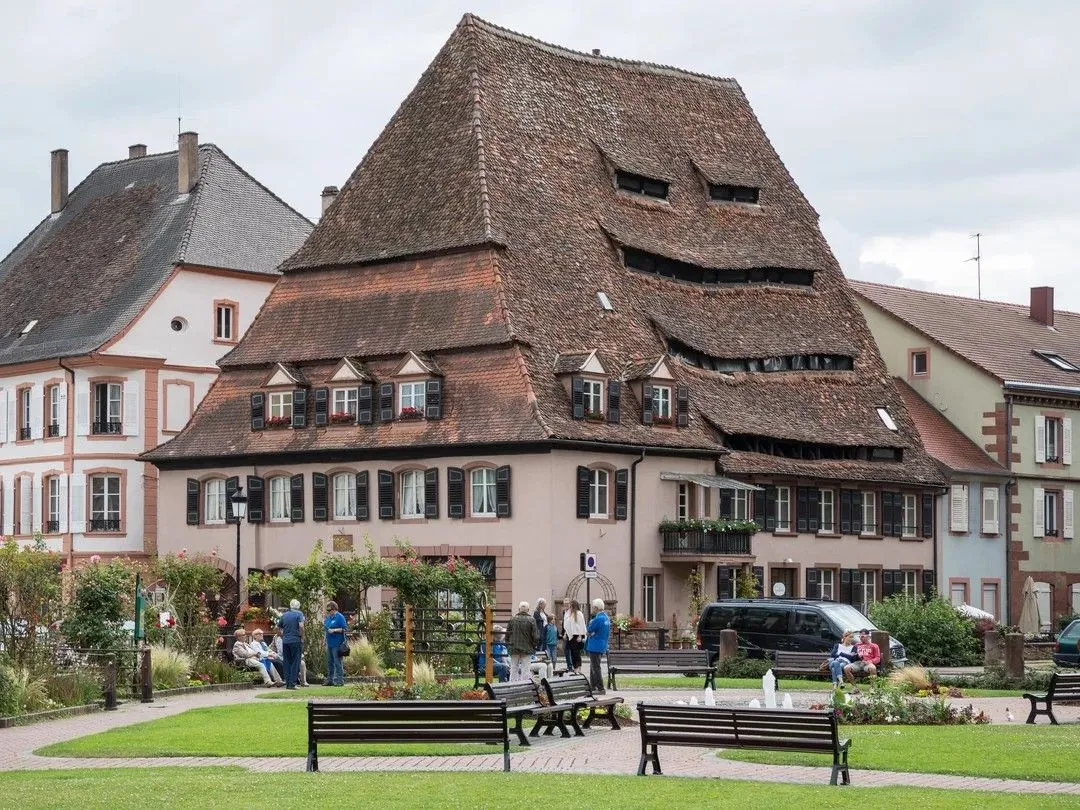
@kokainhaendler/reddit.com
Today, Maison du Sel is a cherished landmark that reflects Wissembourg's rich history and Alsace's architectural heritage. The building has been carefully preserved, and its sturdy structure speaks to the important role it played in the regional economy centuries ago.
The Half-Melted Building
The Half-Melted building in Lancaster, California, is a playful and surreal architectural piece inspired by the famous Krzywy Domek (Crooked House) in Sopot, Poland. Opened in August 2020, this pediatric doctor’s office features a warped, wavy facade that looks as if it’s melting or bending.
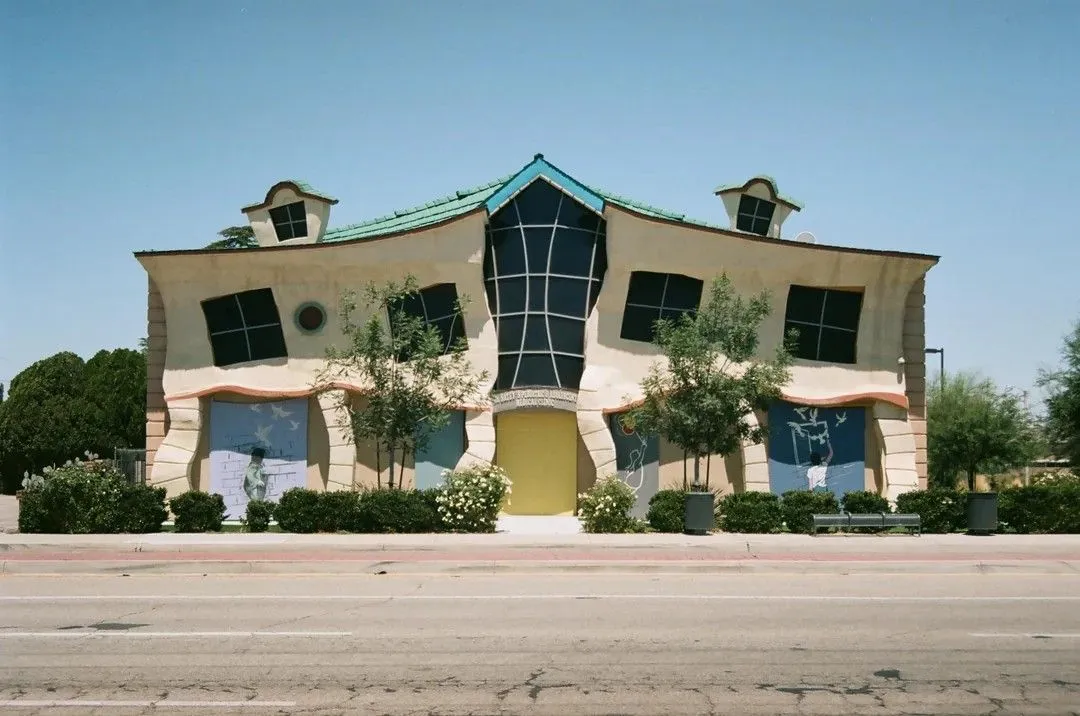
@darealjacbo/reddit.com
Much like Krzywy Domek, the Lancaster building breaks away from traditional architecture, using a cartoon-like style to make the space approachable and fun. The wavy exterior and exaggerated angles create a sense of movement, making it a standout structure in the area.
The Kuchlbauer Tower
The Kuchlbauer Tower was constructed between 1983 and 1985. Commissioned by the Kuchlbauer Brewery, this tower was designed by the renowned artist and architect Friedensreich Hundertwasser, known for his colorful, nature-inspired, and whimsical style.
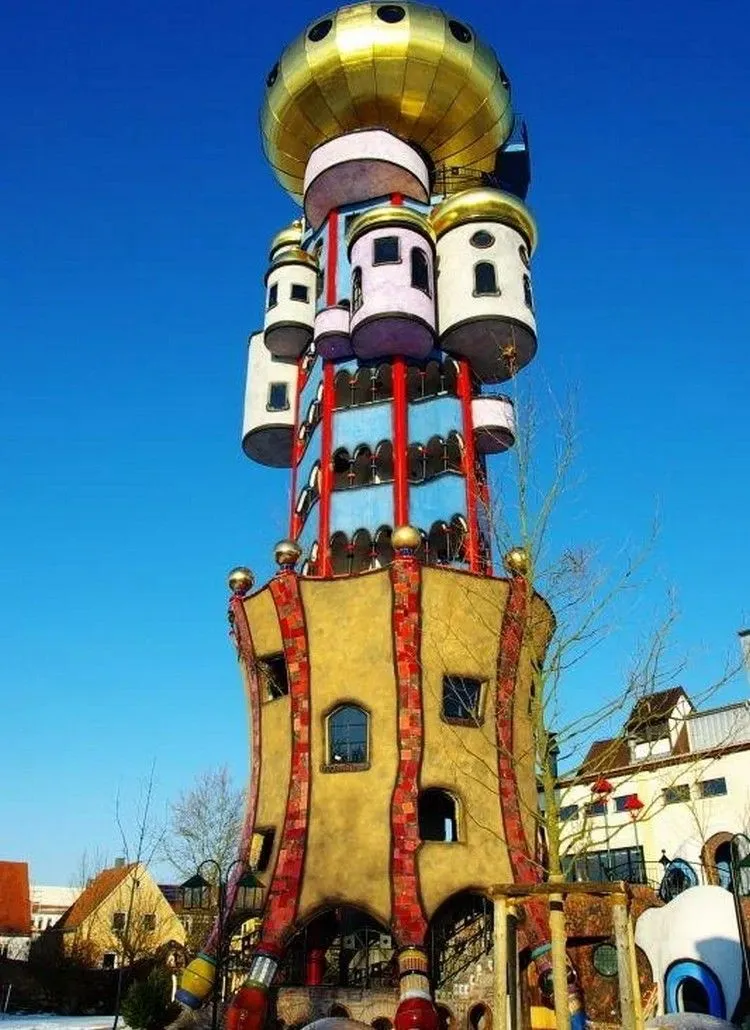
@AlivePoi/reddit.com
Rising 34 meters (111 feet) tall, the tower is adorned with unique elements like irregularly shaped windows, mosaic tiles, and a golden onion dome at the top. Inside, visitors can explore exhibitions about beer and brewing, adding an educational element to the experience.
The Donut Hole
The Donut Hole opened in 1968, the shop is housed inside a giant donut-shaped structure. The building’s design features a large, sculptural donut that is visible from miles away. The Donut Hole’s structure not only serves as a visual centerpiece but also plays into the fun, nostalgic atmosphere of the 1960s roadside eateries.
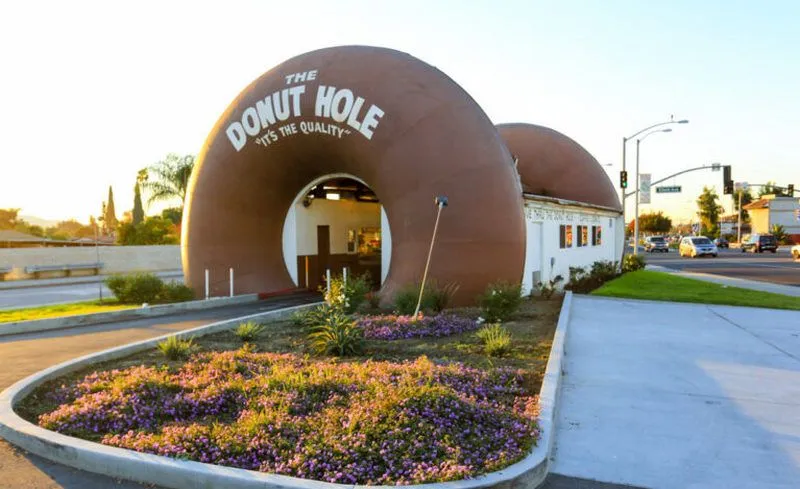
@californiathroughmylens.com/reddit.com
The shop continues to serve fresh, delicious donuts, making it a favorite among donut enthusiasts. The combination of great food and memorable design has cemented The Donut Hole as a piece of a great place to relax.
The Chicken House
The Chicken House in Branson is a fun and family-friendly dining experience designed in the shape of a giant rooster. This whimsical restaurant combines a unique and eye-catching design with a delicious menu focused on Southern comfort food, particularly dishes featuring chicken.
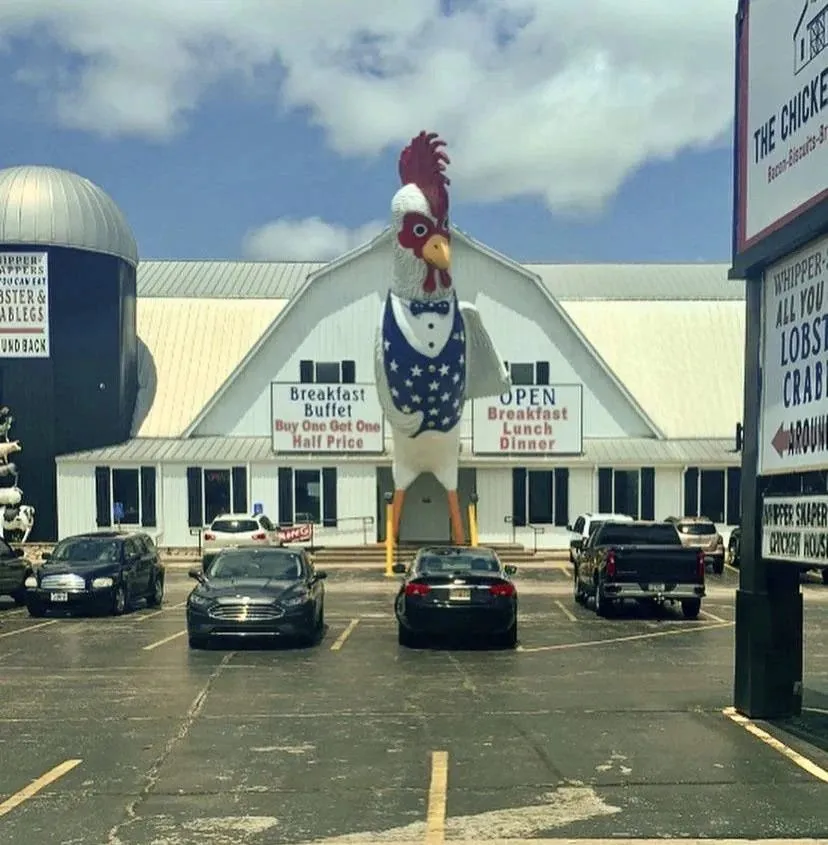
@Muffins2222/reddit.com
Inside, the dining space is spacious and family-oriented, with rustic décor and friendly service. The menu features a variety of chicken dishes, from fried chicken to grilled options, along with sides and classic comfort foods. The Chicken House’s distinctive design makes it more than just a restaurant; it’s an experience that captures the fun and charm of the region.
Gillette Castle
Built between 1914 and 1919, the 184-acre estate nestled along the Connecticut River was originally named Seventh Sister Castle by its creator, William Gillette. This fitting name comes from its location on the seventh hill of the Seven Sisters range.
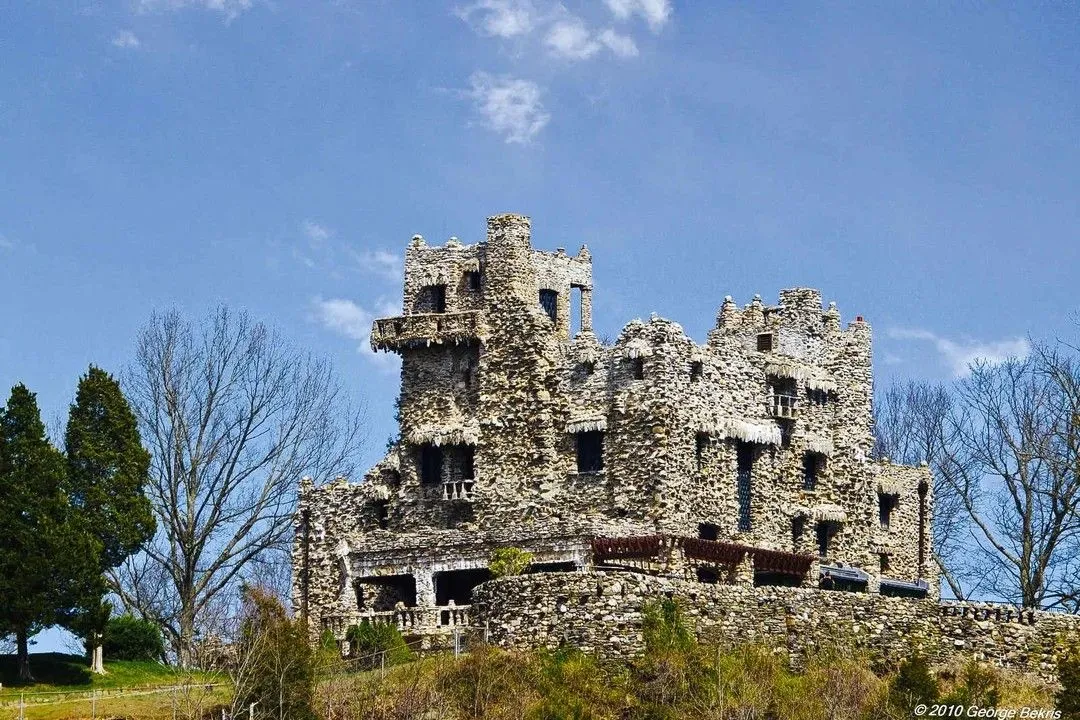
@RedRiverWindsock/reddit.com
Gillette, a man of many talents, personally designed and oversaw the construction of the castle. His creative flair is evident in the castle's unique features, from custom-made wooden light switches and roll-away tables to clever mirrors and even secret passageways.